Tidewater Times July





































































“From the beautiful to the discarded, I am inspired by many things as an artist. I rarely know what will be the subject of my painting, but once discovered, I strive to articulate my impression of that reality into a collection of abstract shapes, strong design and color.”
Bernard Dellario earned a bachelor’s degree from King’s College in Wilkes-Barre, Penn., with emphasis on finance and art history. He studied art at the Art League School in Alexandria, Va., and attended several workshops with nationally known artists. He has been a member of the Washington Society of Landscape Painters (WSLP), one of the oldest
active artist organizations in the Washington area, since 2003 and currently serves as president.
Bernard teaches painting classes through several venues, has won national awards and exhibits throughout the Maryland Eastern Shore and Washington, D.C., region.

The cover painting is titled “Morning Solitude.”
Bernard’s work can be seen locally at Studio B Gallery in Easton, the Crystal Moll Gallery in Baltimore and the Amy Kaslow Gallery in Washington, D.C., or on his website at bjdellario.com .





She was both a lady to her fingertips and a grand old broad. That’s a tightrope not many women can walk, let alone walk with class and style. Her red hair and throaty laugh were known everywhere. My friend and mentor Anne Stinson was larger than life and yet able to pick up the nuances of the smallest things. Her “Nature Notes” columns in the Star Democrat , about her passion for gardening and her love of nature, made every Sunday special for
many years. Readers adored her. Her friends adored her even more. She passed from this mortal coil on May 20, and a light went out in this weary world. Yet she leaves a legacy of joy and color and music that will live on, not just through her beloved children and grandchildren, but through her friends.
I was fortunate to be one of those friends, someone she took a liking to and guided on a rocky path through a writer’s world. And the world of life itself. She used
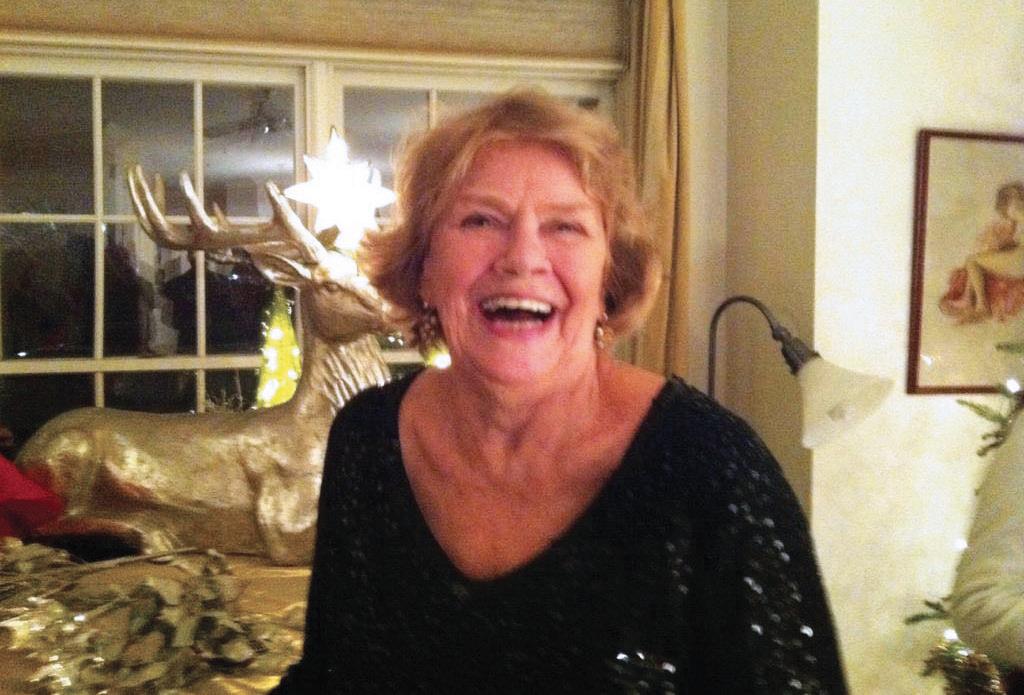
ter dinner, there was magic. Jazz mavens, she and John would play their music. John played piano and Anne played gut bucket. Their favorite tune was “Summertime,” and I can never hear it without thinking about those magical evenings. They knew jazz diva Ethel Ennis from their days in Baltimore, and when she played the Avalon, Ms. Ennis and her husband stayed with the Goodspeeds. So I actually got to meet her, which was a major thrill.
her contacts generously to get me into the Baltimore Sun , where my Oysterback column ran for nearly a decade, and led me on to the Washington Post , and she brought me to Tidewater Times , where I’m proud to have had a safe berth for many years. Anne loved my writing, even when I didn’t, and took me into her life for a glimpse of joie de vivre I might never have found anywhere else.

To begin with, there were the dinners at her house with her husband, John Goodspeed, a retired Sun Hand. We started with cocktails and progressed to something Anne cooked, and it was always good, and great conversation flowed with the martinis. Af-
There will be a lot of ink about Anne, and people will tell you about her gorilla statue, her peeing boy lawn ornament, her beautiful gardens and her adventures in both politics and the scribbling trade. Her life was not always easy, but it was never dull.
The memory I want to share is the time we rode in Easton’s St. Patrick’s Day Parade as The Barbarian Queens.
It was, of course, Anne’s idea. And since she was the Empress Queen of the Barbarians, who was I to disagree? After all, we were rebels and artists and classic performers and in your face, Talbot! We could have been a pair of Boudicas, off to show the Romans what for. It was the ultimate feminist statement at that point. Anne being Anne, she wrangled a spot for us.
Now, to ride in a parade, queens need a convertible. Fortunately,




Anne was driving an Olds Delta 88 that just happened to be a convertible. She looked so cool, whipping around town in her shades with her red hair streaming in the wind.
A parade float needs a driver, so we enlisted my friend Jeff Oliver, who immediately got the idea and agreed to be our wheelman. He donned a Cat in the Hat hat for entertainment.
For us, Anne sewed two tunics from a glittery green material, and we dug up some rhinestone beauty queen tiaras from somewhere. We probably did look like barbarian queens after a night of looting and pillaging, but we were cool.
Anne and I spread our old fur coats on the back deck of the convertible to look even more Barbarian Queen, and I bought a couple of pounds of loose candy we could toss













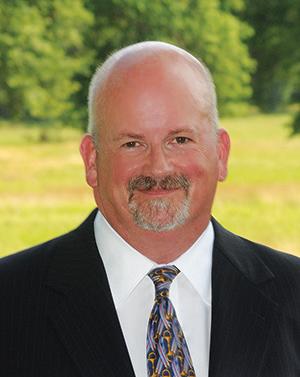


















Requiem for a Redhead
into the crowd. We got some posterboard to attach to the doors and wrote BARBARIAN QUEENS. You know, in case anyone didn’t get it.
I felt as if we were the Krewe of Stinson, riding in the Mardi Gras parade as we pulled into the gathering place behind the police station. The ladies from the local banks and businesses were decorating golf carts with shamrocks and garlands, the high school bands and Double Dutch teams were warming up and, best of all to Anne and me, the Purple Hat Ladies were giving us the stink eye of lèse-majesté like we were a punk band that had just fallen out of CBGB’s. Of course, since we loved shocking the staid, Anne and I were thrilled. Every -
one else seemed to think we were pretty cool, though.
As the parade slowly progressed down Washington Street, the crowds had gathered. We even saw some people we knew who actually got the joke. I got my biggest thrill from tossing candy to the kids. I probably wasn’t supposed to, but the looks on those kids’ faces made me so happy. The expressions on everyone’s faces made me happy because we were part of it.
Anne and I had practiced our Queen Elizabeth wave - you know, the twist of the wrist - so we could look even more royal. Performance art at its best. Only Anne could have pulled it off.
As the parade rolled down Dover Street past the Avalon, I hurled half a bag of Snickers Miniatures to the gang at the theater.
We certainly knew we were cool. And as the parade took off down the street and made a hard right back on Washington, we noticed a friend of ours was chasing us with his camera, so we smiled and posed and waved our queenly waves.
I don’t know about anyone else in the parade, but I was having the time of my life.
I was actually sorry when we pulled back into the lot behind the police station. It had been a lot of fun and had made a lot of people happy. And, once again, Anne had pulled off something no one else could have accomplished.
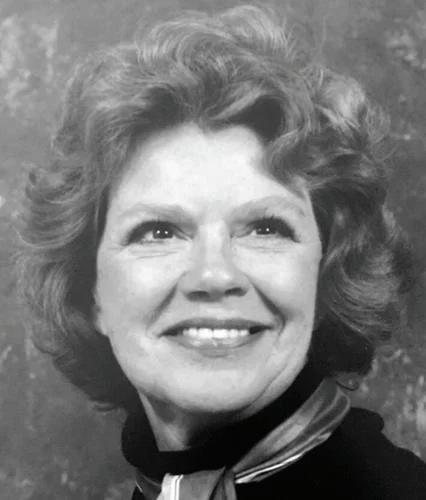
Back at her house, there were drinks and cackling. And there would be drinks and cackling for many years.


I will miss Anne, but I was so fortunate to have her in my life. I was fortunate that she liked my writing and loved me. She may be gone, but her essence will stay with me forever.
I know that somewhere Anne is in a place that looks like Longwood Gardens, surrounded by beauty and color, with all the people she loved who went there before her. And I know she is Barbarian Queen of it all.
Helen Chappell is the creator of the Sam and Hollis mystery series and the Oysterback stories, as well as The Chesapeake Book of the Dead . Under her pen names, Rebecca Baldwin and Caroline Brooks, she has published a number of historical novels.






“The Weber House,” an historic home in the charming and extremely popular community of Fairbank. Built in the late 1800’s this home has been carefully preserved, updated, and expanded providing comfortable living areas from the great room to the master suite with sitting room and o ce. Double porches on the water side, pier and boat ramp. A large outbuilding provides a spacious workshop area plus a studio apartment with full bath and kitchenette. Main house has wood oors throughout, 4 BRs, 3½ BAs, LR with replace, great room, separate dining, two screened porches and private patio area. 2.5 ac. $1,199,000

“…the loveliest fleet of islands that lies anchored in any ocean.”
~ Mark Twain, “Letters from Hawaii”
The seafaring South Pacific Islanders who first landed outrigger canoes on the beaches of what are now known as the Hawaiian Islands could never have imagined what many of the islands would look like today. Especially changed is the island of Oahu, home to the largest population, the Hawaiian capital of Honolulu, high rises and busy highways, military installations and shopping malls, the famous Waikiki
Beach and base camp for my daughter, Holly, and me for our once-in-alifetime adventure.
We were determined to see the natural beauty that Hawaii is known for, as well as its people and culture. And, yes, we enjoyed the beauty of Waikiki Beach with its sparkling aqua waters, soft sandy beach and silhouette of the Diamond Head volcanic cone on its east end. But after a few days of lazy pool and beach

time, we were ready for more island adventures.

The Majestic Circle Island Tour provided us with the opportunity to explore the entire island of Oahu and sample a taste of its natural beauty, culture and people. Away from Honolulu and Waikiki Beach, we just may have experienced some of the glory of Hawaii that the early Polynesian explorers did, and as Mark Twain did many years later.
After a smooth pickup at our hotel, we listened to our native Hawaiian guide sharing facts about the Hawaiian Islands and Oahu as we headed east and then toward the North Shore. We learned that Oahu, sometimes called the “Heart of Hawaii,” is the busiest and most populous of the islands and features worldfamous sights such as Pearl Harbor and the North Shore surfing beaches in addition to Honolulu and Waikiki Beach. Oahu is also called “the gathering place” because it houses the majority of Hawaii’s population,





close to 1 million out of 1.44 million statewide, and features some vastly different cultures as a result, including Hawaiian (of course), Filipino, Japanese, Portuguese, Chinese and Korean, many of whom came to work in the agriculture industry and then stayed. Hawaii is the third most diverse state in the U.S.
Oahu is of volcanic origin and the third largest of the Hawaiian Islands. With a total area of 597 square miles, it contains two parallel mountain groups connected by a central plateau. Tahitians established permanent settlements on Oahu in about 500 CE. In 1795, King Kamehameha I of the island of
Hawaii conquered Oahu and united the Hawaiian Islands. It is situated in the Pacific Ocean 2,390 miles—about a five-hour flight—from Los Angeles. As we headed out of the metropolis and suburbs of Honolulu into heavy traffic on the freeway, our guide, Koaoki, mentioned that Oahu ranks third in worst traffic congestion in the U.S. Guess which states


rank first and second? California and New York, he said.
Our first stop was the Nu’uanu Pali Lookout, a historic panoramic viewing site. It has dramatic views of the sheer Ko’olau cliffs and the lush windward coast of Oahu. Pali is perched more than 1,000 feet above the Oahu coastline amid mountain peaks shrouded by clouds. The breathtaking point is one of the island’s most scenic areas. The city disappears and the tranquil natural beauty of Hawaii emerges there.
We embraced the view as strong, howling winds pushed against us. We held onto each other so as not to fall off the cliff as we learned about the historic significance of the site.
“Pali” means “cliff” in Hawaiian. Pali Lookout is the site of the Battle of Nu’uanu, where King Kamehameha
I won the struggle that finally united all of the islands under one leader.
We had a downpour at our next stop, but Koaoki was ready with plastic rain ponchos as we disembarked, which kept us dry and happy. The Byodo-in Temple was another beautiful site situated in the lush Valley of Temples. The hilly valley landscape along a 2,000-foot mountain range is a resting place (cemetery) scattered with hundreds of freshly placed tropical flowers, including the state flower, the yellow hibiscus, to remember loved ones.
We roamed the elaborate flowering gardens, crossed small bridges over ponds filled with sparkling

Offered at $998,000
Picture perfect 13-acre property offering every amenity, complete privacy, and great location!


Beautiful 5BR home with large gourmet kitchen and elevated ceilings, 3-car detached garage with 1BR apartment above, 2-stall horse stable with several fencedin pastures, gunite pool and expansive patioperfect for entertaining!
Offered at $7,200,000
“Woodlawn Farm” an exceptional 91-acre estate featuring a stunning 4BR manor home, charming 2BR renovated pool house with gunite pool, 4BR guest cottage, two protected piers, and numerous outbuildings. Complete privacy with gated entrances, 3250’ waterfrontage on Bridge Creek & Broad Creek. Breathtaking sunsets!
laura.carney@sothebysrealty.com


lauracarney.com
17 Goldsborough Street
Easton, MD 21601

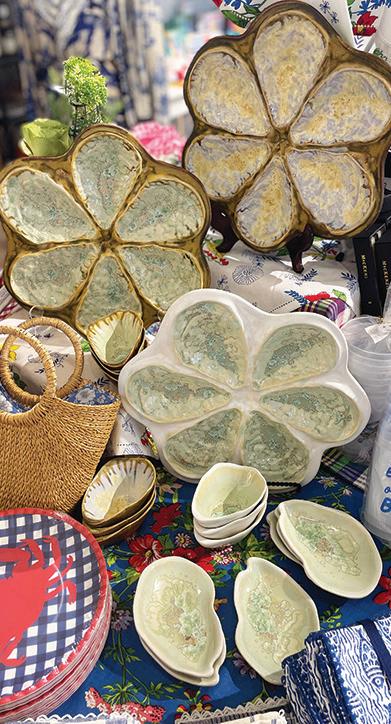

koi and black geese and prayed in front of a tranquil-looking 18-foot Buddha adorned with gold leaf. The Byodo-in Temple is a scale replica of a Japanese temple that commemorates the first Japanese immigrants to Hawaii. When rung by visitors, a large sacred brass bell reverberates throughout the gardens and temple with deep tranquil and meditative sounds to send out happiness and longevity to all.
With everyone ready for lunch, we stopped at a little outdoor pavilion for a locally prepared repast of grilled chicken, rice and fresh pineapple. Delicious. The rain let up by the next stop, and we were enchanted with a verdant botanical garden walk and waterfalls at Waimea Valley. The tropical gardens, waterfall, shops and a restaurant benefit and preserve the Hawaiian culture and community. The mile-long walk to the falls winds through amazing exotic gardens of oversized ferns, lily ponds and wild birds, while signs describe the grounds, his -



Classic Eastern Shore Cape Cod situated on Island Creek with approximately 400 feet of shoreline, deep water at pier, and an extremely rare boat house. The Main house is well appointed and takes full advantage of water views. Chef’s kitchen with high-end stainless steel appliances, island, breakfast area with fireplace and water views. Formal living and dining rooms, river room and a family room with wet bar. Main-level primary suite and two additional bedrooms on upper level including with en-suite baths. Loft overlooking family room that walks out to balcony perfect for an office or sitting room. In-ground pool and pool house with pergola, patio, kitchenette, and full cabana bath. 2-car attached garage and outbuilding for additional storage space.




Well-maintained home located in the sought after Arcadia Shores neighborhood. Interior features a traditional floor plan with formal living and dining rooms as well as an open kitchen and family room that leads to the 3 season sunroom. Ample sized bedrooms and primary suite with walk-in closet and full bath. Bonus room above the garage is perfect as a playroom/game room, craft room or climate controlled storage. Enjoy the privacy of this beautiful 4.58+/- acre tree-lined lot and spend time relaxing on the stone patio. 2-car attached garage with workspace and large shed great for additional storage. Arcadia Shores provides the best of a private, country setting while being a waterfront community primely located between Easton and St. Michaels.




Embracing Hawaii the 1980s due to the high cost of local labor and land.)

tory and plant life that exists in the sacred valley.
Like the best of guides, Koaoki was knowledgeable and entertaining. He shared information about the mountain ranges, renowned surfer beaches (like Waimea Bay, home to some of the world’s biggest waves), towns, villages, tropical forests and pineapple plantations that we surveyed. Our last stop was the Dole Pineapple Plantation, “Hawaii’s Complete Pineapple Experience,” on the North Shore. More commercial than lush, of course, but fun, the site includes a garden, a train tour, a maze, a museum and a gift shop with all things pineapple. For Holly and me, the highlights of the experience were exploring the tropical flower gardens and slurping on a Dole Pineapple Whip, a delightful mix of soft vanilla ice cream and frozen pineapple chunks.
(Note: Dole and Del Monte relocated much of their Hawaii pineapple production elsewhere in the world in

Famished and exhausted, we returned to Waikiki Beach after a 10-hour tour. We walked across the street from our hotel, the Outrigger Waikiki Beach, to the International Market and bought dinner from local vendors selling Pad Thai, barbecued chicken, fresh fruit and vegetables. We were overjoyed to have seen so much of Oahu in one day, to support local cooks at lunch and dinner and to crash in our comfortable room with a



view of the sunset at Waikiki Beach.
In our quest to learn more about the culture and history of our 50th state and its people, we embarked a few days later on a trip to the Polynesian Cultural Center (PCC) in the village of La’ie, about 30 minutes from our resort. Our driver, Georgia, a proud Hawaiian, taught us some Hawaiian words and meanings. “Aloha,“ which we thought meant just “hello,” also means “goodbye,” “love” and several other things. “Ohana” means “family.” “Mahalo,” which we used a lot, means “thank you.”
According to DK Eyewitness Travel Hawaii, the village of La’ie on Oahu’s North Shore was founded by Mormon missionaries in 1864. It
now includes a Mormon temple, a branch of Brigham Young University (BYU) and a 42-acre educational theme park, the renowned PCC, our destination. We were impressed to learn that the PCC is staffed by students from the Pacific Polynesian Islands who attend BYU.
We were educated and entertained while visiting the six Polynesian villages situated around a river. Students from Tonga, Hawaii, Samoa, Tahiti, Fiji and Aotearoa (Māori for New Zealand) demonstrated arts and crafts and sang and danced (including the hula in the Hawaiian village) in their countries’ regalia. Some of the shows proved quite amusing when they brought audience members to the stage to try the dances in costumes. Hilarious!



We were transported in outrigger canoes and small ferries on the river from one village to the next. We tried our hand at playing drums, starting a fire and making flower ink prints on fabric. We also tried poi, a native dish made from the taro plant, which tasted like paste to our palates. Visitor participation is encouraged.
At the PCC, we were able to experience the vibrant hospitality, history, culture and traditions of many South Pacific islands in one place and for a good cause. We watched a beautiful introductory film about the natural beauty of the Hawaiian Islands— the mountains, volcanoes, ocean, flowers and forests—and the bond that Hawaiians have with the land.
The PCC is a 501(c)(3) charitable organization. All proceeds benefit the preservation and protection of Polynesian cultures and the education and development of students from across the Pacific. It is Hawaii’s most popular paid attraction, with more than 700,000 visitors a year.



Having visited New Zealand and a Māori Cultural Center there, I was particularly thrilled to visit the Aotearoa village at the PCC and to share the experience with Holly. The Māori students demonstrated their fearsome war dance, the “haka,” with music. The haka was performed in a group, as is usual, and demonstrates Māori pride, strength and unity. The Māori postural dance involves the entire body in vigorous rhythmic movements, which may include swaying, slapping of the chest and thighs, stamping, vocal sounds and gestures. Thrilling!
We ended the day with dinner and a show at the PCC. The dining

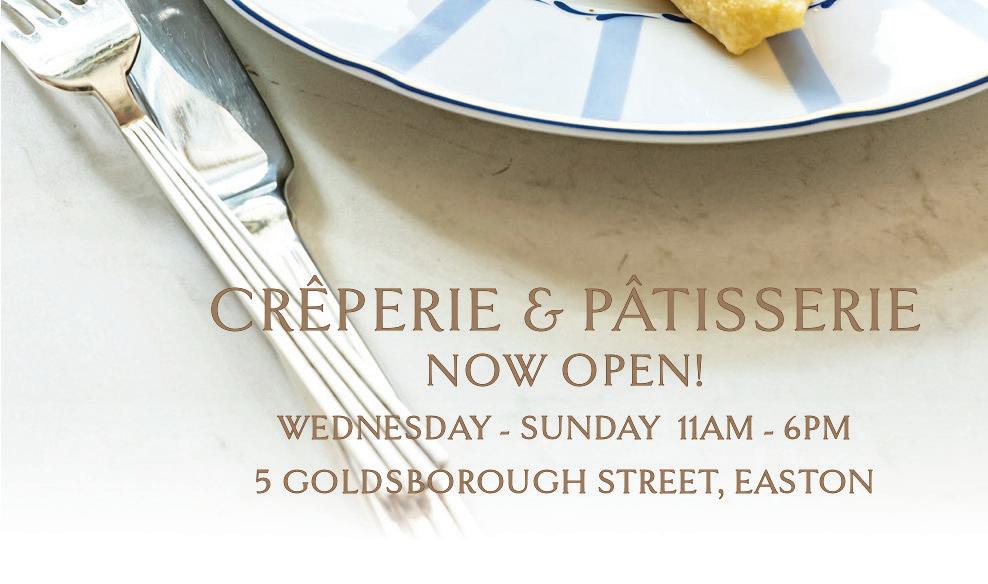
spot was the Gateway to Polynesia Restaurant, named after Hawaii, “the gateway in the Pacific between East and West.” We dined on delicacies from Hawaii’s land and sea: Hawaiian-styled shrimp, fish, chicken, mangoes, papaya and pineapple, topped off with chocolate macadamia nut ice cream and a macadamia nut cookie. Two musicians played ukuleles and serenaded us with Hawaiian music. Joyful!
An amazing theatrical production, “HA: Breathe of Life,” was our final treat and educational experience that night in the outdoor Pacific Theater. More than 100 talented, skilled BYU Polynesian singers, dancers, actors, knife throwers, drummers and fire eaters produced
a remarkable show about the history of the Polynesian islands and people as seen through one family’s story. The enchanting music and costumes were all created by BYU staff, students and alumni for the show. It was another wonderful introduction to and celebration of the people, history and cultures of Polynesia.
It was also another long day for us, 11 hours. The next day was a pool/beach day to regenerate. We were blessed with sun after a damp and cloudy day at the PCC. The highlight of that down day for me was the craft class at our resort. While Holly enjoyed her cabana lounge chair at the pool, I enjoyed making a Hawaiian craft with the Outrigger Resort activities staff in the lobby at a table next to an outrigger canoe exhibit. What symbolizes Hawaii to you?
A lei must come to mind. I made my own lei! Tables were spread with fragrant orchid blossoms. The group of kids and adults were told to gather 60 of the delicate white and purple blossoms to make our leis. Next, we broke off the stems. Then, with a four-inch needle threaded with a double loop of heavy white thread, we poked the needle through the centers of 60 flowers with four at a time on the needle. We gently pushed the flowers along the thread, leaving a four-inch string at the end. After all the flowers were strung, we tied the knot and cut the string. I proudly wore my beautiful, aromatic lei to the pool, where Holly
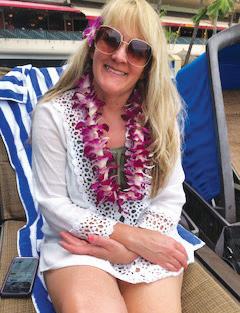

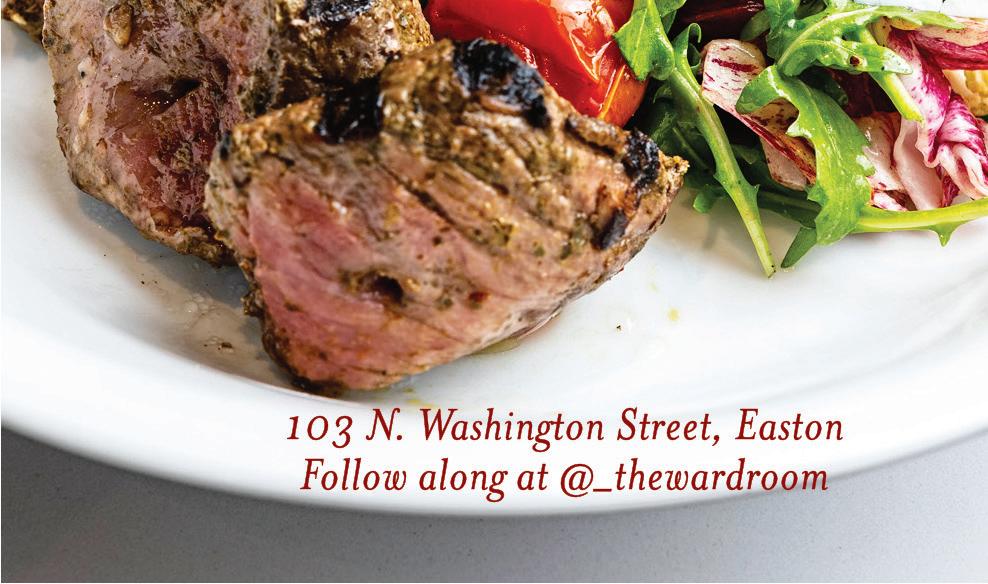






SHARP’S IS. LIGHT: 46 minutes before Oxford
TILGHMAN: Dogwood Harbor same as Oxford
EASTON POINT: 5 minutes after Oxford
CAMBRIDGE: 10 minutes after Oxford
CLAIBORNE: 25 minutes after Oxford
ST. MICHAELS MILES R.: 47 min. after Oxford
WYE LANDING: 1 hr. after Oxford
ANNAPOLIS: 1 hr., 29 min. after Oxford
KENT NARROWS: 1 hr., 29 min. after Oxford


CENTREVILLE LANDING: 2 hrs. after Oxford
CHESTERTOWN: 3 hrs., 44 min. after Oxford
3 month tides at www.tidewatertimes.com

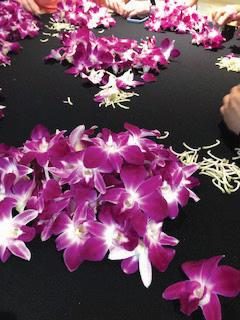
and I took turns wearing it and taking photos of each other.
As we lounged by the pool watching bathers and surfers enjoy the ocean and beach, we talked about our next adventure and the conclusion to our embrace of Hawaii. We were thinking about our fl ight to the “Big Island” of Hawaii and a visit to Volcano National Park and other adventures. Oh, what wonders does this special island hold for us? Check in next month for the reveal.
Bonna L. Nelson is a Bay-area writer, columnist, photographer and world traveler. She resides in Easton with her husband, John.

2
2 Owner’s Suites
806
MDTA2005632

2 Bedrooms, 1 Bath $259,900




MDTA2004820

Thirty-one contoured acres of open space, woods and a stream. The main house dates to 1740 as the miller’s house for Bloomingdale Estate. Additions on both sides over the years include a modern kitchen and cozy family room plus a first floor primary suite with large bonus room above. The main house offers four bedrooms four bathrooms and several fireplaces. Keeping much of the historic charm the home is updated for modern living. Additional structures include a couple of older buildings, one used as kennels and storage plus a more modern barn with a large shop, two car garage and other covered storage. The park-like grounds include a 40’x20’ pool, grape arbor and many flower beds. All in all a beautiful property.

$1,250,000

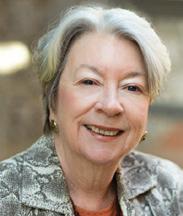
Academy of Country Music Awards, watch out. North Caroline High School senior and singer/ songwriter Reagan Kent of Denton, Md., has his eye on Nashville and is cultivating a thriving music career right here on the Delmarva Peninsula.
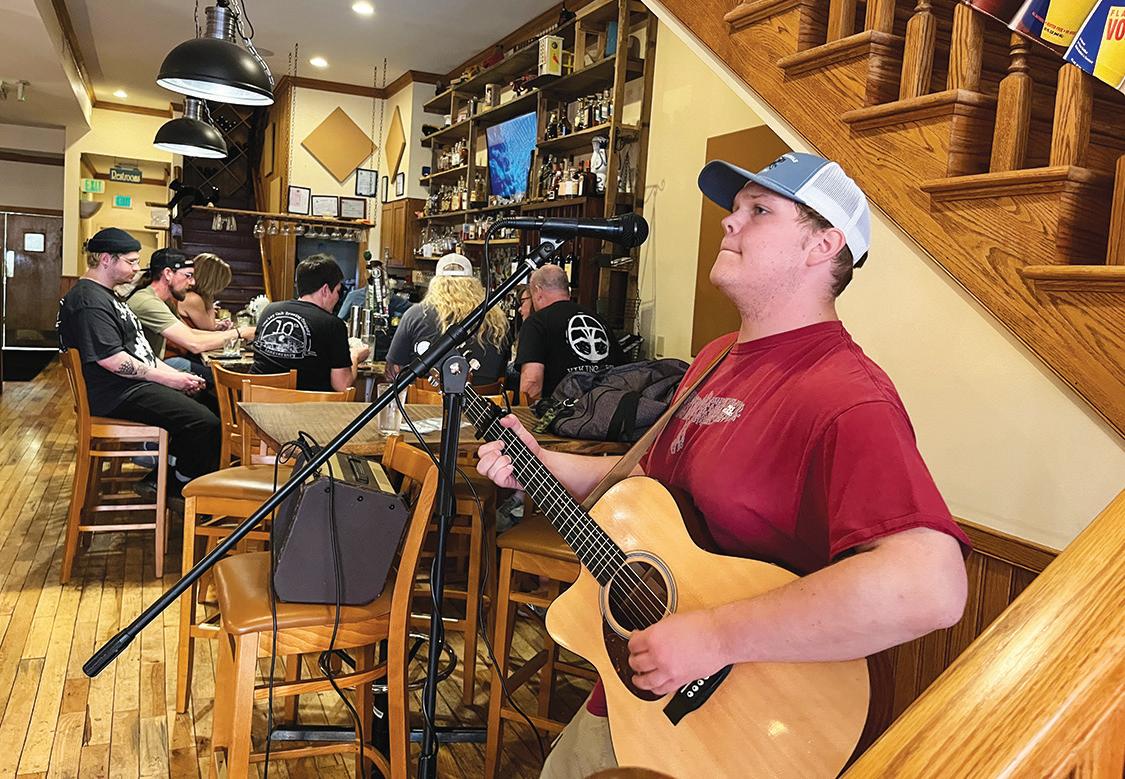
Kent’s soulful voice already transcends genres and generations, as evidenced by the attentive diners and bar patrons tapping their feet or fingers during his recent performance at Boxcar on Main in Berlin,
Md. His face lights up when a couple rises to dance to one of his songs.
“I like connecting with audiences,” says Kent. “When people are actively listening, or dancing and singing along, that’s when I’m in my sweet spot.”
Boxcar on Main is one of several return gigs on this 16-year-old’s performance schedule, which peaks this summer with two to three weekly appearances scheduled through September.
“Often, people worry about book-
ing a kid,” says Reagan’s dad, Andy Kent, who helps Reagan manage the business side of music and is fre -
quently in the audience. “But once they hear him perform and see how the audience responds, they always book him back.”
Standing with his Martin guitar, Kent is dressed in a T-shirt and baseball cap as he steps up to the mic, performing a mix of his own songs and covers from favorites like Chris Stapleton, Zach Bryan and Bailey Zimmerman. Kent’s trained tenor voice easily transitions between two octaves as he moves through a setlist that covers his first love—country—along with classic and modern rock.
“Chris Stapleton is my all-time favorite because I really like his bluesy music,” says Kent, who attended a Stapleton concert with his family when he was 13 years old.

Now, he covers Stapleton hits like Broken Halos and Death Row. Other favorites to perform include Bryan’s Something in the Orange, Condemned, Fifth of May and Heading South, and Zimmerman’s Fall in Love, Where It Ends and Never Coming Home.
Kent’s natural talents have been cultivated alongside a love for the outdoors and nature since he was a young boy. Born in Lewes, Del., he began singing at the age of three while listening to the radio, often during family road trips.
Kent’s parents are big classic rock fans and remain huge supporters of his musical talents. Kent began taking singing lessons at the age



of eight with Ashley Mitchell and guitar lessons with Donny Marvel when he was 12 years old. He says the travel to Camden, Del., for these eight- and four-year commitments has been easy because the two instructors are married.
Much of his musical inspiration, however, comes from his blues-loving, harmonica- and guitar-playing grandfather, David Ebersole.
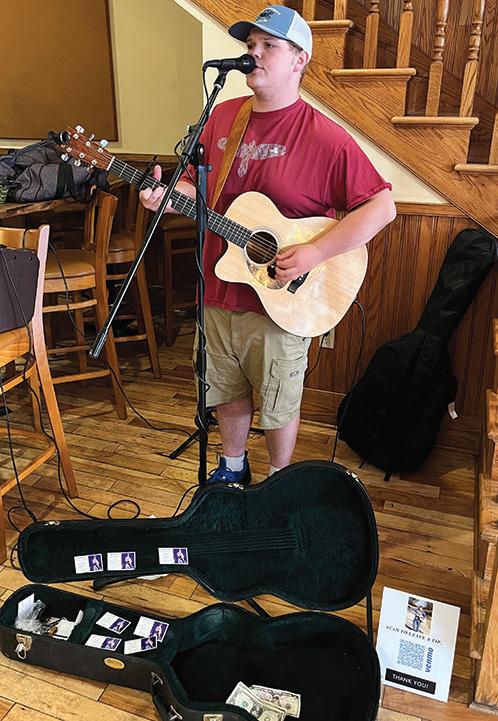
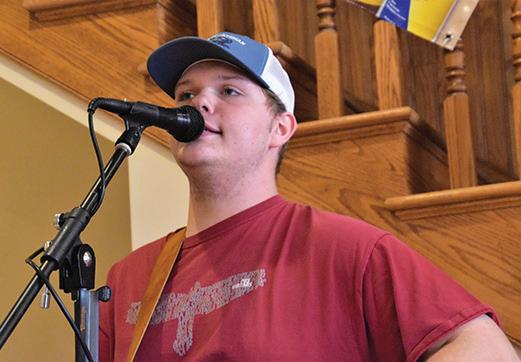
Kent’s grandfather—or Poppy, as he calls him—now lives in West Virginia and has helped instill a love of music in Kent with some of his rock and roll and blues favorites. Kent says songs like Lynyrd Skynyrd’s Sweet Home Alabama, The Joker by Steve Miller Band and Dixie Chicken by Little Feat were regulars among his grandfather’s repertoires.
“Poppy always encouraged me to sing and play instruments,” says Kent, who wrote his first song at the age of 14 to honor his grandfather’s name and legacy.
The song is an ode to his inspir -
ing Kent’s love of music, with lyrics that include, “Poppy, teach me how to sing the blues. I wanna know how to get your soul and maybe some of that rock and roll.”
Kent is now developing his own soulful blues and rock and roll by writing music. He says he sets aside an hour or two each day for songwriting and practicing guitar and singing. “It usually takes me about one to three sessions to complete a song,” he says.
“I often find myself playing what has been developed so far and singing through it to create the verses and song,” said Kent. “Sometimes when I’m thinking about the music, the lyrics will come to me randomly. Otherwise, I’m dedicating time to work on a song.”

“I have some ties with a few of the school’s alumni that will also help support my career,” he says.
During the upcoming school year, Kent plans to be dual-enrolled at Chesapeake College and continue as a member of North Caroline High School’s vocal group Rhythm of the Ridge, with concerts open to the public each May and December. He says the group’s performances vary and usually include a holiday theme or Motown and gospel influences.
So far, his songwriting includes songs like Let the Good Times Roll, about having a good time and fi shing with your friends, and It Was You, about a man’s revelations regarding the reasons behind a split relationship.
After years of ongoing vocal lessons, Kent also understands the importance of warming up with vocal exercises, which for him often includes singing Paint Me a Birmingham by Tracy Lawrence in preparation for a gig.
“I’m in this for the long haul, whether it’s a career in music or a career supporting music,” he says.
Kent’s career is already taking off. He recently saved enough money from his performance gigs and tips to purchase a pickup truck and has his eye on attending Middle Tennessee State University near Nashville.

Meanwhile, over the summer months, you can fi nd Kent making his Poppy proud. He’ll be performing at private parties and public gigs from Kent Island to Ocean City, Md., and from Chincoteague, Va., to Lewes, Del. Open mics and scheduled gigs include venues like Carpenter Street Saloon in St. Michaels, Md., and the Market Street Public House in Denton. More about Reagan Kent can be found on the “Reagan Kent Vocalist” Facebook page or on Instagram at @ reagankent.vocalist.
Tracey Johns has worked in communications, marketing and business management for more than 30 years, including non-profit leadership. Tracey’s work is focused on public and constituent relations, along with communication strategies, positioning and brand development and project management.



For 17 years, I have driven one or both of my daughters to school in the morning. Those drives are done now, with my younger daughter just graduating from Easton High School. It’s a chapter that is finished in her life and in mine. The story moves to what is next. If we focus too much on what is ending, we might miss what is about to begin. My best mornings include time
for centering prayer, which is a way of praying developed most recently by a Trappist monk named Thomas Keating. Keating died in 2018 and was a pioneer and proponent of a worldwide movement of contemplative prayer. In his book Open Mind, Open Heart, he writes, “The purpose of centering prayer is not to experience peace, but to clear the unconscious obstacles to the permanent

right? Life lately has been busy on all fronts. I have not made enough time for this kind of emptying and connecting quiet time. And when life begins to unfold in new and different ways, those are some of the most important times to be quiet and listen.
abiding state of union with God.”
Keating writes, “Contemplative prayer is not so much the absence of thoughts as detachment from them. It is the opening of mind, body, and emotions—our whole being—to God, the Ultimate Mystery, beyond words, thoughts, and emotions.”
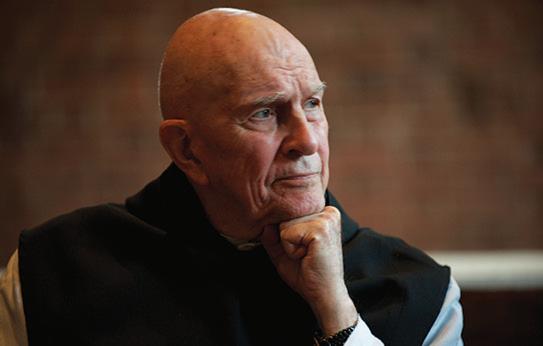

Simple and straightforward,

In centering prayer, you generally repeat a word to re-center you when your mind wanders. That word can be any number of things— love, peace, God, amen, gratitude. Recently, I couldn’t find a word to help me center. I had so many things competing for attention in my mind, it was like having a comforter or bedding in the washing machine when it is spinning and bangs all over the place.
The washing machine of my mind








stopped spinning, got quiet…and the word “bloom” opened on its own. I don’t know how it got there. But that was it.
Our life goes through phases. For my girls, it has been moving from elementary school to middle school, then to high school and graduation. There is always something to mark the transition from one thing to the next. In my life, there have been school, jobs, relationships, marriage, kids, divorce, health crises, career change, kids growing up, seminary, etc. In all of our cases, in anyone’s case, really, the journey is toward some end: what about blooming?
What if we look at our lives as moving toward blooming, and all the things we go through—some that we enjoy, some that we don’t want to experience again—what if each of those steps along our paths is mov-

Think of flowers and gardens. There is a lot that goes into flowers blooming—where they are planted, how good the soil is, how much water, how much sunlight—some of which we can help with, some of which we can’t. But if you spend any time in a garden or in your yard, you know what it feels like to work toward something coming into flower, or bearing fruit, in terms of a vegetable garden. And we do the work that is necessary to get what we hope will happen.
Do we give our own lives that kind of space and grace and purpose to think that maybe we can grow into something in the same way, with attention and intention?
John Ruskin, writer, philosopher and art critic, said that “if a thing can be done, it can be done easily, but this ease is like the ease of a tree blossoming after long years of gathering strength.”



Patience and perspective are key to giving something, including ourselves, time to bloom. “Long years of gathering strength”—that’s a different way to think about ease. When I think of something being easy, its being immediate, or at least quick, is implied.
Blooming takes time. Anna and Ava are 21 and 18 years into a journey that I am 51 years into. The journey is of being alive, of each of us living our lives until we aren’t. We tend to look at things as being positive—graduation, relationships, new job, new car—or negative, say, the loss of any of those things. But it might be more helpful to look at everything that happens to us as moving us closer toward becoming who we might be.
What does blooming look like in a person? Who are we to become? There are so many answers to that question. It’s fair to say that in some cases, the answer may change, or the first answer we come up with may not be the final answer.
This summer, we will have a small group study of David Brooks’s book The Second Mountain: The Quest for a Moral Life. Brooks talks about the kinds of conversations we have.

“All conversations are either humanizing or dehumanizing, and problem-centered conversations tend to be impersonal and dehumanizing,” he writes. “The better
community-building conversations focus on possibilities, not problems. They are questions such as, what crossroads do we stand at right now? What can we build together? How can we improve our lives together? What talents do we have here that haven’t been fully expressed?”
Who we become is greatly impacted by who we are around, who we engage with, who we give our time and energy to. We won’t bloom alone. We need each other. In his focus on two mountains in our lives, Brooks looks at people “who radiate joy—who seem to know why they were put on this earth, who glow with a kind of inner light.”
For our metaphor, let’s say people who are blooming. These are people Brooks says have moved past the


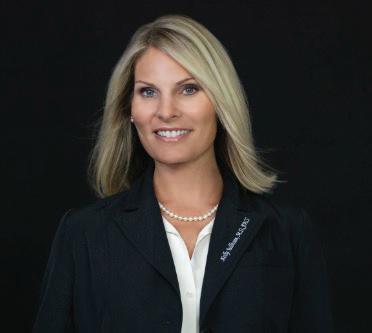



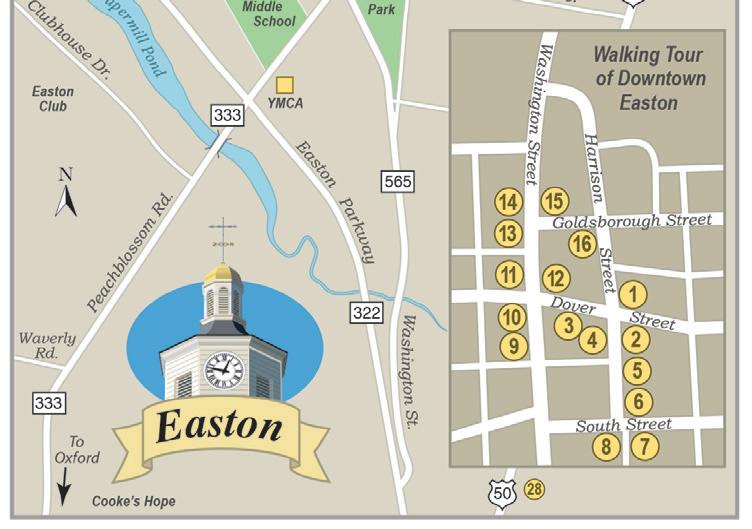

The County Seat of Talbot County. Established around early religious settlements and a court of law, Historic Downtown Easton is today a centerpiece of fine specialty shops, business and cultural activities, unique restaurants, and architectural fascination. Treelined streets are graced with various period structures and remarkable homes, carefully preserved or restored. Because of its historical significance, historic Easton has earned distinction as the “Colonial Capitol of the Eastern Shore” and was honored as number eight in the book
“The 100 Best Small Towns in America.” With a population of over 16,500, Easton offers the best of many worlds including access to large metropolitan areas like Baltimore, Annapolis, Washington, and Wilmington. For a walking tour and more history visit https:// tidewatertimes.com/travel-tourism/easton-maryland/.

Toward Blooming are buying and selling. But you say, no, the main activity of life is giving. Human beings at their best are givers of gifts.”
first mountain in their lives and are focused on the second. They are focused on community.
“Individualism thrives in the prosaic world, the world of career choices and worldly accomplishment. The second-mountain ethos says, no, this is an enchanted world, a moral and emotional drama….The second-mountain ethos says that a worldview that focuses on selfinterest doesn’t account for the full amplitude of the human person. We are capable of great acts of love that self-interest cannot fathom, and murderous acts of cruelty that selfinterest cannot explain. Individualism says, the main activities of life
I hope that as my girls move through life’s different phases, they can see themselves as on a journey toward blooming. I hope that all of our blooming moves us toward great acts of love and to be givers of gifts.
Michael Valliantis
the Assistant for Adult Education and Newcomers Ministry at Christ Church Easton.He has worked for non-profit organizations throughout Talbot County, including the Oxford Community Center, Chesapeake Bay Maritime Museum and Academy Art Museum.
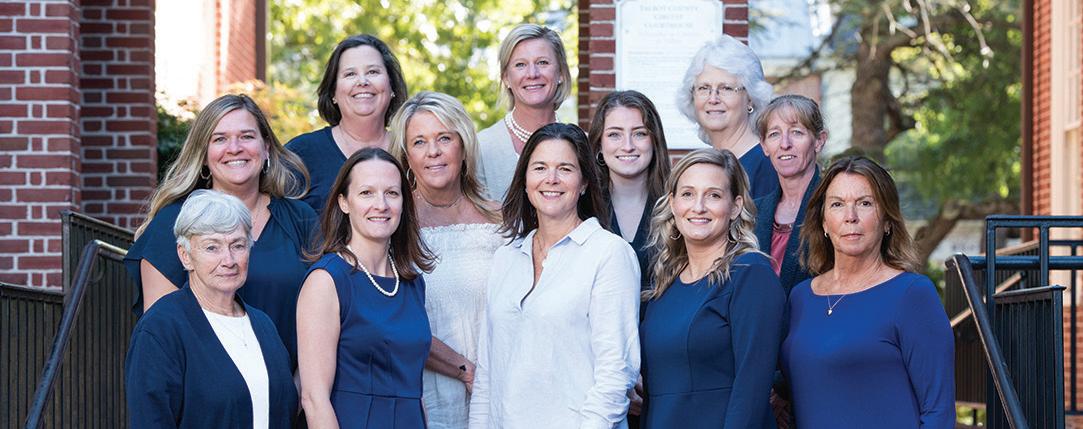







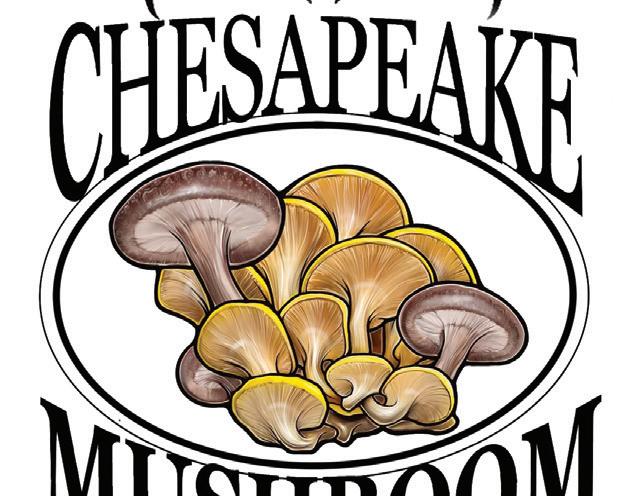



Every summer, something happens that I look forward to all year: I spot a pile of the first sweet corn of the season at the farmer’s market. Immediately, I know what I will make when I get home—plain old corn on the cob! If you want a perfectly sweet corn taste without sacrificing that glorious crunchy bite, I have you covered! Corn is

the only ingredient you need for the basic corn method. I have to say that during peak summer season, corn boiled in plain old water and rolled in just a bit of sweet cream butter with a dash of salt is amazingly delicious!
Rose and Bill Eason taught me how to boil the corn by adding cold water to a large pot, followed

by corn and salt, if desired. Bring the shucked corn to a boil and cook for 5–7 minutes until it reaches the desired doneness. If you like your corn crisp and fresh, then cook for a shorter time. Once the corn

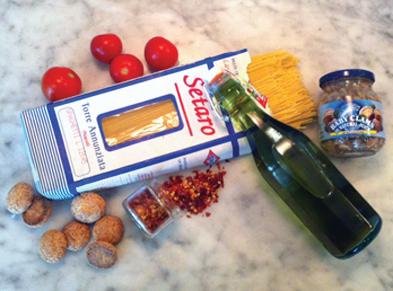
is cooked to your liking, drain the water and use tongs to remove the ears to a plate.
You can also cook corn by one of the following methods:
On the grill: Pull back the husks (don’t pull them back entirely), remove the silk and draw the husks back to enclose the ears of corn once again. Soak them in a sink or tub of cold water for 30 minutes. Soaking helps to keep your corn moist while grilling and prevents fire and burning the husks. It also yields more tender corn since the husk traps the steam inside.
Meanwhile, preheat the grill to medium-hot. Drain the corn and toss the ears, in their husks, on the grill. Cook, turning occasionally, until tender and steaming hot, about 15 minutes. Pull back the husks and return the ears to the grill for just long enough to acquire a few grill marks.
In the microwave: This is one of the simplest methods for preparing corn. Toss the whole unshucked ears, silk and all, into the microwave and cook on high for 3 minutes per ear (if cooking two ears, total cooking time is 6 min -
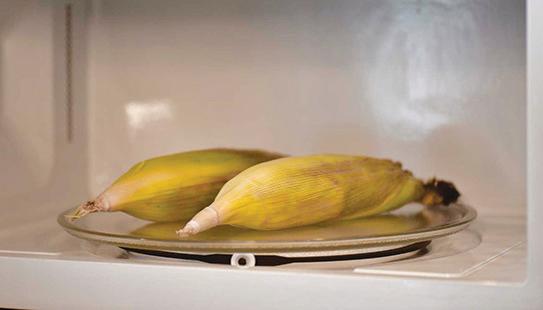
utes). To retain the heat until serving time, allow the cooked cobs to rest in their husks until you are ready to sit down. The silk will peel right off with the husks.
In the middle of June, it seems downright un-American to serve corn on the cob any way but rolled in butter. But by August, even diehard corn fanatics will accept a little variety. After a few weeks, my mind starts imagining all the corn recipes I can make. Should I start with a corn salad, chowder, or corn pudding or add a new spice or seasoning?

The sugar in corn starts to break down as soon as it is picked.
So, the quicker from field to table, the better.




2 cups fresh corn kernels
2 cups fresh peas or frozen peas
2/3 cup celery, chopped
1/2 cup sweet onion, finely chopped
1/2 cup red bell pepper, chopped
Heat corn and peas in a saucepan over medium-high heat until tender. Drain and cool.
Transfer corn and peas to a large salad bowl and add celery, onion and red bell pepper.
Toss with Parsley Dressing, coating well. Cover and chill.
Parsley Dressing

1/2 cup seasoned rice vinegar
2 tablespoons fresh parsley, minced
1 tablespoon brown sugar
1/2 teaspoon sea salt
1/4 teaspoon freshly ground pepper
1 tablespoon fresh mint, minced
Combine ingredients in a small bowl, mixing well.
Serves 8–10.

1–2 tablespoons sea salt
6 cups fresh corn kernels (12 ears of corn)
CrackerjacksToys.com

Great game for those rare

1/4 cup unsalted butter, or your favorite non-dairy butter
2 large sweet onions, finely chopped
1/2 cup flour, or gluten-free flour
1 teaspoon freshly ground pepper
1/2 teaspoon Old Bay Seasoning
10 cups chicken or vegetable broth
1-1/2 pounds potatoes, peeled and chopped
1 cup half-and-half or your favorite non-dairy milk
1/2 pound shredded sharp Cheddar cheese, or your favorite nondairy cheese
1-1/2 pounds shrimp, peeled and deveined
Cook the corn by adding cold water to a large pot. Bring the corn to a boil, drain the water, then rinse under cold water and set aside.
Melt butter in a medium Dutch oven over medium-high heat and sauté onions until tender. Stir in flour, pepper and Old Bay and continue stirring for 3 minutes. Add
chicken broth and potatoes. Bring to a boil and cook 15–20 minutes, or until potatoes are tender.
Cut corn off the cob. Stir in corn, half-and-half, cheese and shrimp. Cook for 3 additional minutes or until the shrimp are pink. Serve hot. Serves 6.
Virginia-Style Corn Pudding
4 ears fresh corn
3 tablespoons sugar

2 tablespoons flour, or gluten-free flour
1/2 teaspoon sea salt
1/4 teaspoon freshly ground pepper
2 eggs, beaten
2 tablespoons butter, melted, or non-dairy butter
1 cup milk, or non-dairy milk
Preheat the oven to 325°F. Cut corn off the cob, scraping ears. Add sugar, flour, salt and pepper. Blend in beaten eggs, butter and milk. Bake in a greased 9-inch square casserole dish for about 1 hour. Serves 4–6. Note: A teaspoon of vanilla and dash of nutmeg may be added if desired.

It really takes little effort to chop four tomatoes and cut the kernels off ten ears of corn. The reward is a wonderful and highly portable summer salad to make ahead for picnics and cookouts.

5 cups fresh corn kernels (from about 10 ears)
1/4 cup canola oil, expeller pressed 3 tablespoons raspberry vinegar
Juice of 1 lime
Kosher salt and freshly ground pepper to taste
4 ripe tomatoes, cored, seeded and coarsely chopped 10 scallions, white and light green parts chopped
1/3 cup chopped fresh cilantro
Bring salted water to a boil in a vegetable steamer. Put the corn kernels in the steamer basket, cover and steam until just crisptender, 3–5 minutes. Meanwhile, whisk the oil, vinegar and lime juice together in a small bowl. Season to taste with salt and pepper. Combine the corn, tomatoes, scallions and cilantro in a large bowl. Toss with the dressing and serve at room temperature or chilled. The salad will keep, covered and refrigerated, for up to 3 days. Serves 8–10.


This is just one of the many ways you can season corn on the cob. Freshly minced summer herbs, such as chives, cilantro, basil and thyme, or bold spices like chili powder and cumin, add lively flavor.
Acupuncture and Natural Health
Acupuncture & Moxibustion · Cupping Women’s Health · Children’s Health
Homotoxicology · Ion Cleanse Foot Bath
Polyvagal Therapy & Acupuncture
SAAT/Soliman’s Aricular Allergy Treatment
We specialize in a form of acupuncture based upon the teachings of Kiiko Matsumoto and functional medicine principles which result in a wholistic and highly effective treatment for all types of patients.


410.310.3717
933 S. Talbot St., Suite 14 St. Michaels
halowholistics.com

Grilled corn on the cob is always a treat, but you can achieve that same great taste without firing up the grill!
1/4 cup unsalted butter, softened, or non-dairy butter or olive oil



Tidewater Kitchen
1 tablespoon parsley, chopped
2 garlic cloves, minced
1 teaspoon fresh rosemary, chopped
1 teaspoon fresh thyme, chopped
3/4 teaspoon kosher salt
1/2 teaspoon black pepper
4 ears fresh corn, husks removed.
Preheat the oven to 425°F. While the oven is warming, stir together butter, parsley, garlic, rosemary, thyme, salt and pepper in a bowl.
After the ingredients are well combined, spread about a tablespoon herb butter on each corn cob; wrap each individually in aluminum foil. Place foil-wrapped corn on a baking sheet.
Bake until corn is soft, 20–25 minutes, turning once halfway through cook time. Remove corn from foil and serve.
Tip: Olive oil can be used instead of butter. With the sweetness of the corn, it tastes the same.
The Mid-Shore Community Foundation connects private resources with public needs in order to enhance the quality of life throughout the Mid-Shore Region. We provide tools that enable donors to easily and effectively support the causes they care about - immediately or via bequest.



102 East Dover Street
Easton, Maryland 21601
410-820-8175
www.mscf.org
A longtime resident of Oxford, Pamela Meredith, formerly Denver’s NBC Channel 9 Children’s Chef, has taught both adult and children’s cooking classes. She currently resides in Easton.
For more of Pam’s recipes, visit the Story Archive tab at tidewatertimes.com.

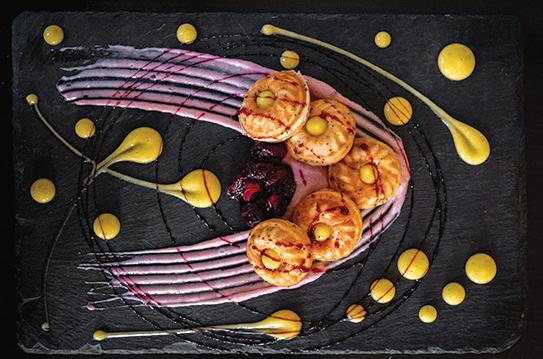

Adam Flood
"The best new restaurant on the Eastern Shore!"




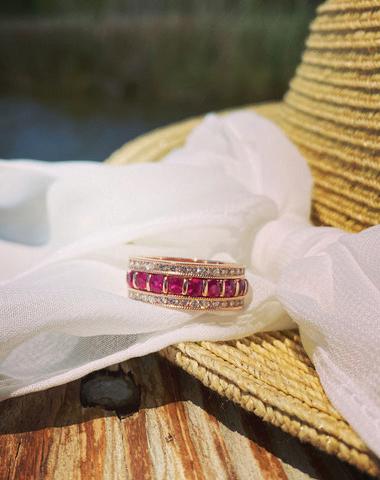
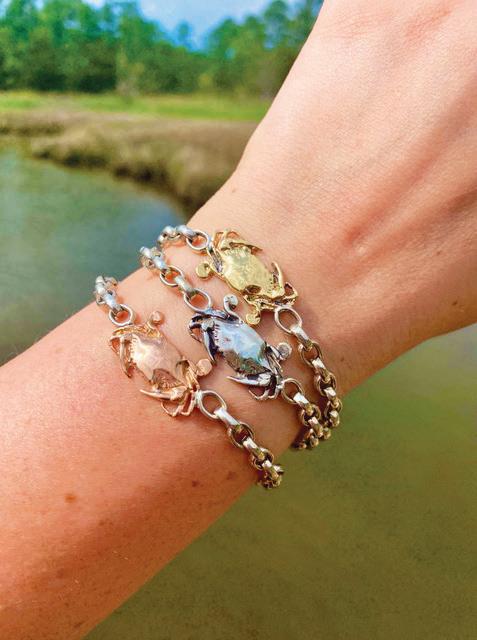



Dorchester County is known as the Heart of the Chesapeake. It is rich in Chesapeake Bay history, folklore and tradition. With 1,700 miles of shoreline (more than any other Maryland county), marshlands, working boats, quaint waterfront towns and villages among fertile farm fields – much still exists of what is the authentic Eastern Shore landscape and traditional way of life along the Chesapeake.
For more information about Dorchester County visit https://tidewatertimes.com/travel-tourism/dorchester/.






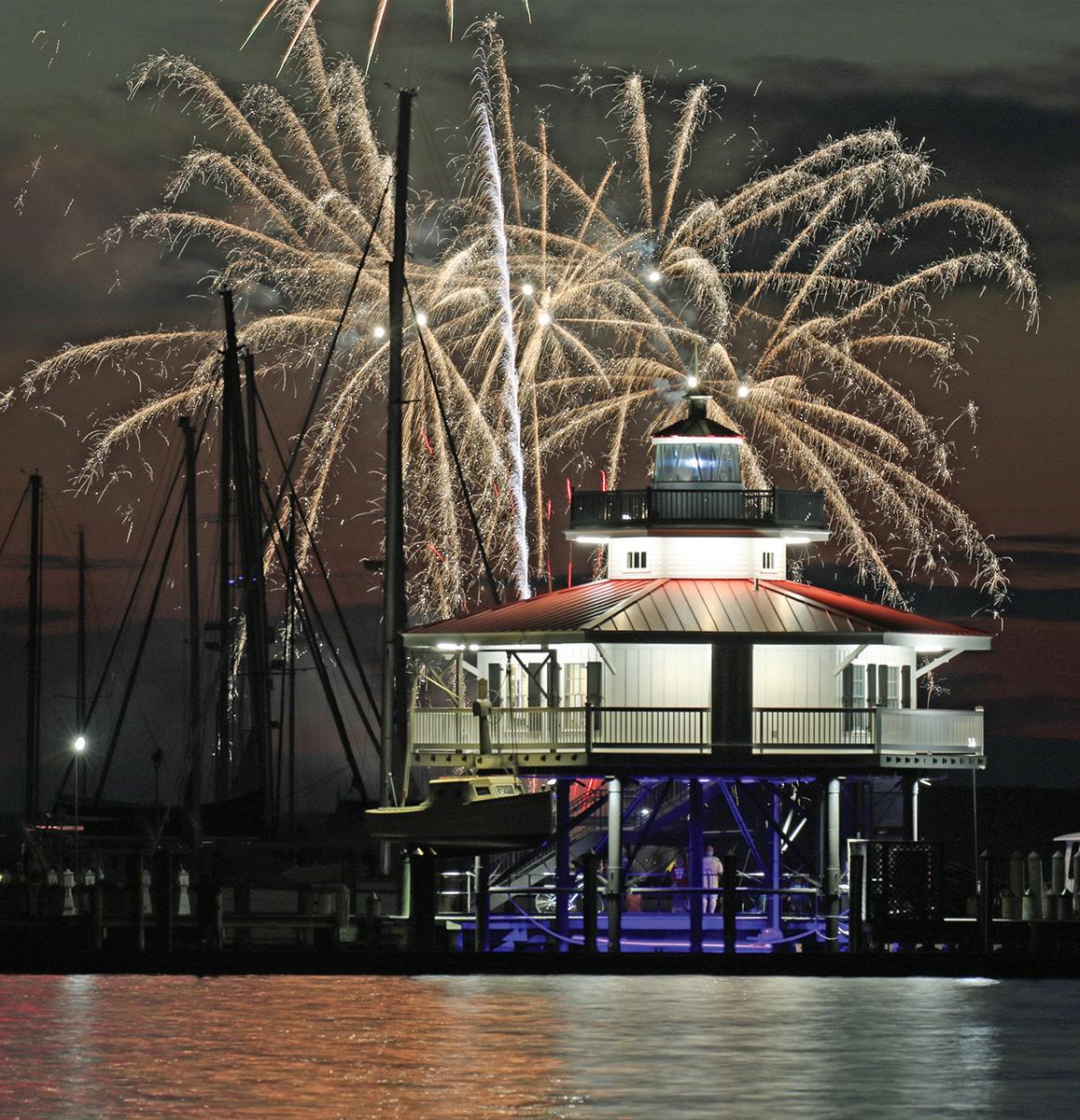







 by K. Marc Teffeau, Ph.D.
by K. Marc Teffeau, Ph.D.
One highlight of the July landscape is that daylilies are in full bloom. Native to Asia and grown from antiquity, this plant was named “Hemerocallis,” or “beautiful for a day,” by the ancient Greeks because the individual flowers only last a single day. They make for excellent cut flowers if you cut them early in the morning. Depending on the variety, they flower from June to September, with each
type blooming for a three- to fourweek period. There are literally thousands of varieties of daylilies. I like reblooming daylilies. They have a first flush of blooms and then periodically bloom all through the growing season. One that I like and use in my landscape is the Stella d’Oro, a dwarf variety that blooms from early May into September and October. ‘Blackeyed Stella’ is similar to ‘Stella

d’Oro,’ only with a dark red eye. Other reblooming daylilies include ‘Apricot-sparkles,’ ‘Early bird-cardinal,’ and ‘Pardon-me,’ to name a few.

first house, one of the first things we did was find a wild patch of these lilies growing in a highway right of way, dig up a clump and plant them along the foundation. I call these “railroad” lilies because you see them growing wild along railroad tracks.

My wife and I got married in late June, when the wild orange lilies (AKA “ditch lilies”) that you see along the roadside were coming into bloom. When we bought our
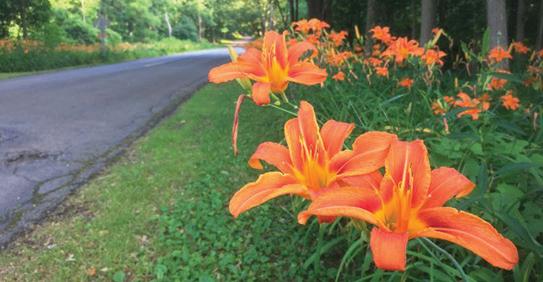
Lilies are easy to care for and have many uses in the landscape. They can be planted along banks or used as filler between shrubs or in a perennial bed. They prefer full sun but will do fine in open shade sites. Plants range from about 1 to 3 feet in height and produce flowers in shades of orange, yellow, red and pink. They are adaptable to a wide range of soils but don’t tolerate poorly drained areas.
Early spring and late summer are the best times to transplant new plants. Heavy clumps can be dug up and divided after flowering. I recommend that this be done every three years, as the larger the clump, the fewer flowers over time.






Cut the leaves back to about onethird of their original length, and then divide the clump with a sharp spade into the number of pieces you want.



I always cut the flower stems, called scapes, after all the buds on the scape have flowered. You can wait until they turn brown and pull


them out, though this allows the flowers to produce seed pods. I prefer that the energy needed for seed pod production goes back into the plant. Lilies are not fussy as to soil fertility, but it always helps when planting or replanting to work some compost or other organic matter into the soil. Set the plants with the junction of the buds and roots 1 inch below the soil surface, and space them 2 to 3 feet apart. Water well until new growth appears. In spring, scatter 5-10-5 or 5-10-10 fertilizer around each plant, making sure the fertilizer doesn’t come into direct contact with the plant’s crown.
Asiatic and Oriental lilies also provide colorful, easy-to-grow, additions to your garden and land-






scape. They are easy to care for and offer a wide variety of heights, flower forms and colors. These lilies do well as container plants on the porch and patio. While they usually do better if planted in fall, you can plant them in spring if you get them early. If you plant a combination of early, mid-season and late-blooming cultivars, you can have lilies in flower from mid-June through mid-September.
Asiatic lilies require minimal care and are very hardy. They need no staking and are not particularly demanding about soil, as long as it is well drained and slightly acidic (6.5 pH). Asiatic and Oriental lilies grow best in full sunlight but will tolerate light shade. Six to eight hours of direct sunlight is best. They bloom early, usually in June and July. Bulbs can be left in the ground and will multiply readily

when planted in an ideal location.
Oriental lilies are the latest to bloom (late July or August) and are also the most exotic. Most are tall and bear big, fragrant flowers, so they may require staking. For the best effect, plant lilies in groups of three or five identical bulbs. Space them 8 to 12 inches apart, keeping groups 3 to 5 feet apart, depending on the vigor and size of the lilies. Plant small lily bulbs 2 to 4 inches deep and large bulbs 4 to 6 inches deep, measuring from the top of the bulb.
Divide and replant large clusters of bulbs every three years or so—or when it seems they are not blooming as well as they did originally. Keep the roots shaded by planting them between other plants or covering them with mulch. Fertilize the soil each spring with a phosphorus-rich formula such as 5-10-10. Slow-release fertilizers also work well. Deadhead fading flowers by breaking them off carefully. Do not remove stems or foliage. They’ll continue to put energy into the bulb as long as they remain green. Remove old foliage in late fall or early spring by cutting down the dead stalks. Once the leaves and stems turn yellow and wither, cut the plant back to the ground.
If you have bearded iris in the flower bed, the best time to plant or transplant is from six weeks after bloom is finished through September and October. Divide and trans -




plant iris after flowering, saving only the most vigorous ones. Discard any that have any type of root or iris borer damage. Also remove any leftover flower stalks.
Bearded iris emerge from a fleshy, bulblike stem called a rhizome that grows horizontally just below the soil surface. When you plant the rhizome, it is important that you keep in on the soil surface. In heavy clay soils, the rhizome should be planted higher so that up to half of it is exposed above soil level.
When preparing the soil for a new bearded iris bed, fertilize with a complete fertilizer that is low in nitrogen and high in phosphorus and potassium, such as 5-10-10. A general rule of thumb is to apply 1 pound of 5-10-10 per 100 square feet. Work the fertilizer into the
soil, and let the bed settle before planting. Bearded iris prefer slightly alkaline soil, so in the absence of a soil test, lightly sprinkle some lime into the planting bed.

While bearded iris grow from rhizomes, Dutch iris are grown from bulbs. These bloom in early summer and produce slender, graceful flowers in deep and light blue, purple, yellow and white on 24-inch stems. They prefer sun or afternoon shade and rich, well-drained soil. Plant Dutch iris bulbs 4 to 6 inches deep in October or November.
July is also the time to divide and replant crowded early-blooming perennials. Be sure to deadhead or cut off spent blooms in the perennial bed. Also do this for annuals to keep them blooming. You want the plant’s energy to go into producing more flowers, not seeds. Be sure to stake tall perennials to keep them from falling over. If you are growing lavender, cut the first flowers to encourage a second crop. Also try rubbing your hands with lavender leaves to remove strong odors such as garlic or onion. Cut back and fertilize delphinium and phlox for a second show of bloom, and be sure to pinch chrysanthemums for the last time in mid-July.
In the vegetable garden, it’s time to start thinking about fall. Start your broccoli, cabbage and cauliflower seeds now so you can set them out as fall transplants in August. Mid- to late July is a good
time to direct seed lettuce, spinach, beets, carrots and turnips into the garden, though they may be a little slow in germinating because of the high temperatures. Try lowering the soil temperatures by covering the seed bed with a floating row cover like re-may or some other shading material. Succession plantings of green beans can go in until the first of August, but wait until August to plant peas for fall.
Your tomato plants need attention in July. Even though tomatoes are self-pollinating, they need movement to transfer pollen within the flower. If it is hot and calm for several days, gently shake plants to ensure pollen transfer and fruit set. Temperatures over 90°F can


interfere with blossom set. I make it a practice every day to give my tomato plants a little gentle nudging to help the pollination process along. Also keep an eye out for tomato hornworm, the caterpillar stage of the brown and gray hawk moth. These huge worms can do enormous damage overnight.
It is very important not to wet the tomato foliage when irrigating the plants, as this encourages the spread of leaf disease. Early and late leaf blight, Septoria leaf spot and bacterial leaf spot are all spread by water from leaf to leaf. Water early in the morning at the base of the plants to reduce possible leaf disease issues. One thing you might notice on your tomato
plants is the yellowing of the lower leaves. This is a natural process, as these were the first leaves produced by the plant and as such are becoming less efficient at producing nutrients. Remove these yellow leaves to encourage good plant health.
Your zucchini and yellow squash plants might look bad and be starting to wilt. Squash vine borer is the most common culprit. Do a second planting of each to prolong the season, and remove and trash the infested plants.




Annuals in the landscape usually start to fade in mid- to late July. You can rejuvenate them by cutting them back to approximately half

their height, fertilizing them with ½ cup of 5-10-10 per square yard of planted area, watering and then applying a 1- to 2-inch layer of mulch. You can also apply a liquid fertilizer or a manure or compost “tea” to give them a shot in the arm, so to speak. Remove any annuals that don’t make it and add them to the compost pile. You can replant beds with hardy annuals or perennials such as calendulas, globe thistles or sea pinks. Happy Gardening!
Marc Teffeau retired as Director of Research and Regulatory Affairs at the American Nursery and Landscape Association in Washington, D.C. He now lives in Georgia with his wife, Linda.




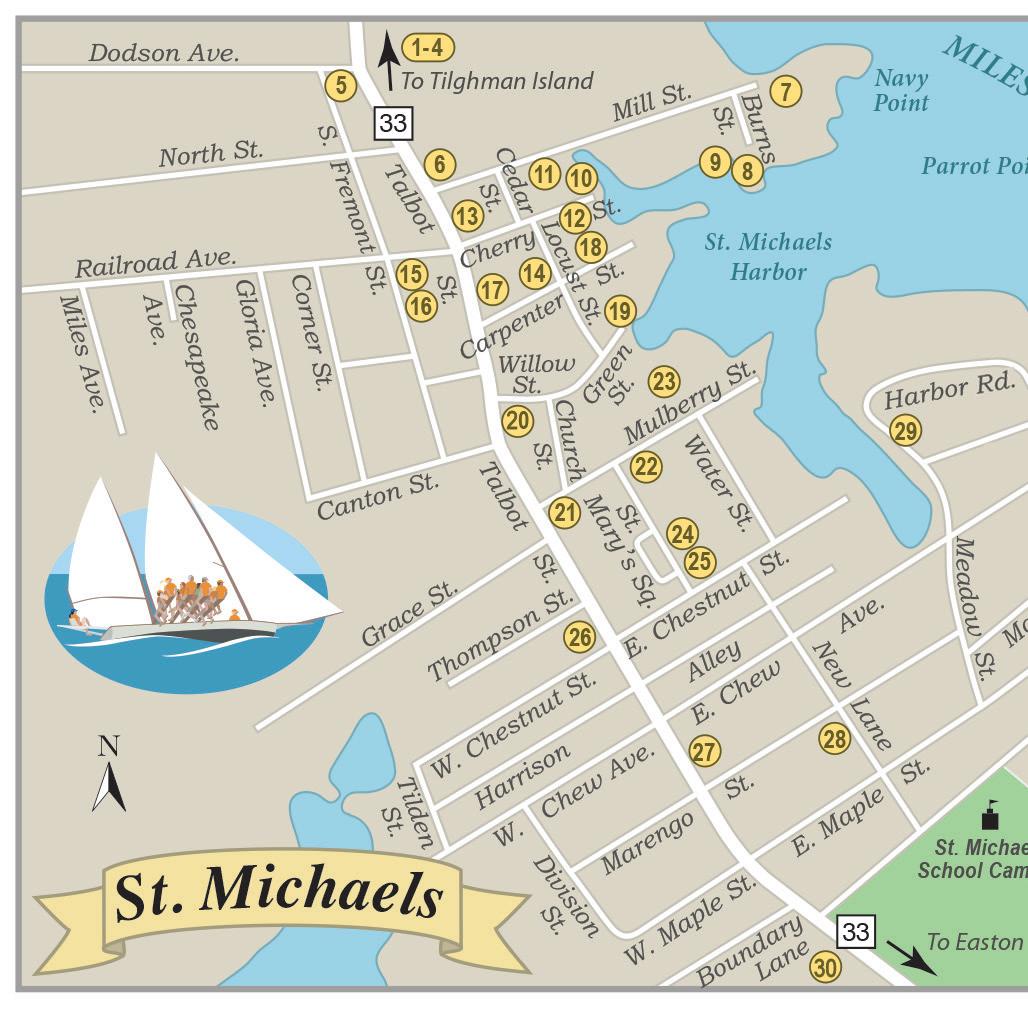
On the broad Miles River, with its picturesque tree-lined streets and beautiful harbor, St. Michaels has been a haven for boats plying the Chesapeake and its inlets since the earliest days. Here, some of the handsomest models of the Bay craft, such as canoes, bugeyes, pungys and some famous Baltimore Clippers, were designed and built. The Church, named “St. Michael’s,” was the first building erected (about 1677) and around it clustered the town that took its name.
For a walking tour and more history of the St. Michaels area visit https://tidewatertimes.com/travel-tourism/st-michaels-maryland/.


Sailing Chesapeake Bay in a luxurious yacht would fulfill dreams for many, but “be careful what you wish for.” One who realized many such fantasies was film star Errol Flynn, a skilled sailor who ran aground after gaining wealth and fame. His beloved yacht Zaca survived a horde of creditors, but just barely. Flynn did not.
In 1945, the Navy released a 118foot schooner from wartime shore patrol. Flynn purchased PE4170, née Zaca, and restored her to pre-
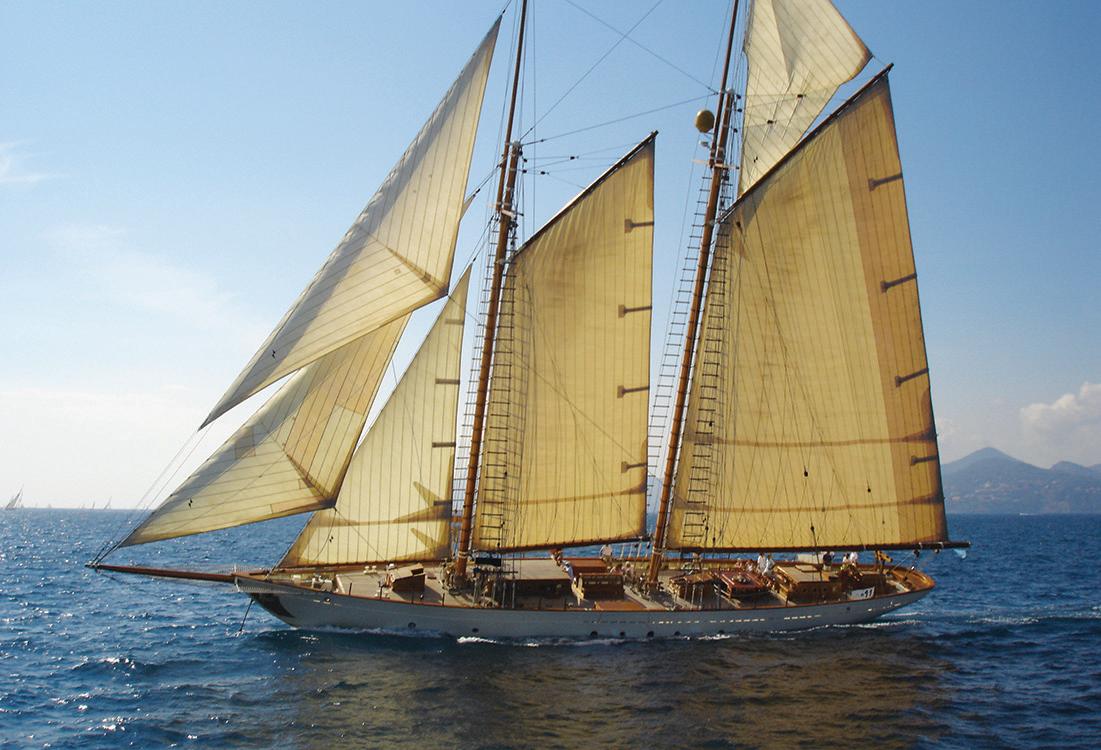
war luxury, freeing her teak from battleship-gray paint, covering his bed with an ermine spread. A journalist he once took along wrote, “He could sail that boat!...We’d anchor and the two of us would go up to a little bar and drink tequila—he bare-chested with a knife stuck in his belt.”
Fans of Turner Classic Movies have an inkling of why Errol Flynn, handsome and athletic, created a Hollywood furor after working his way there from Down Under. In
tant mother presaged a lifetime of love-hate relationships with women. He got along well with his dad and with mates.

more ways than one, he was a true Tasmanian devil, born on that Australian island soon after his father, Theodore, wed Marelle Young. She later described her son as “a dirty little brute…a nasty little boy.” Issues between Errol and his reluc -
Marelle descended from Midshipman Ned Young, Fletcher Christian’s real-life co-conspirator on HMS Bounty. When mutineers sailed Bounty to Pitcairn Island, they shanghaied twenty Tahitians, mostly women. Over several years, murderous dissension reduced English survivors to two, one of whom was Marelle’s ancestor. Ned died of natural causes after having fathered a number of children, including three with Fletcher Christian’s widow, Mauratua. As a child, Errol played with a sword mutineers took from Captain William Bligh.
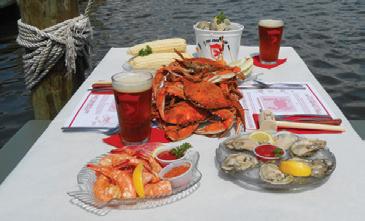

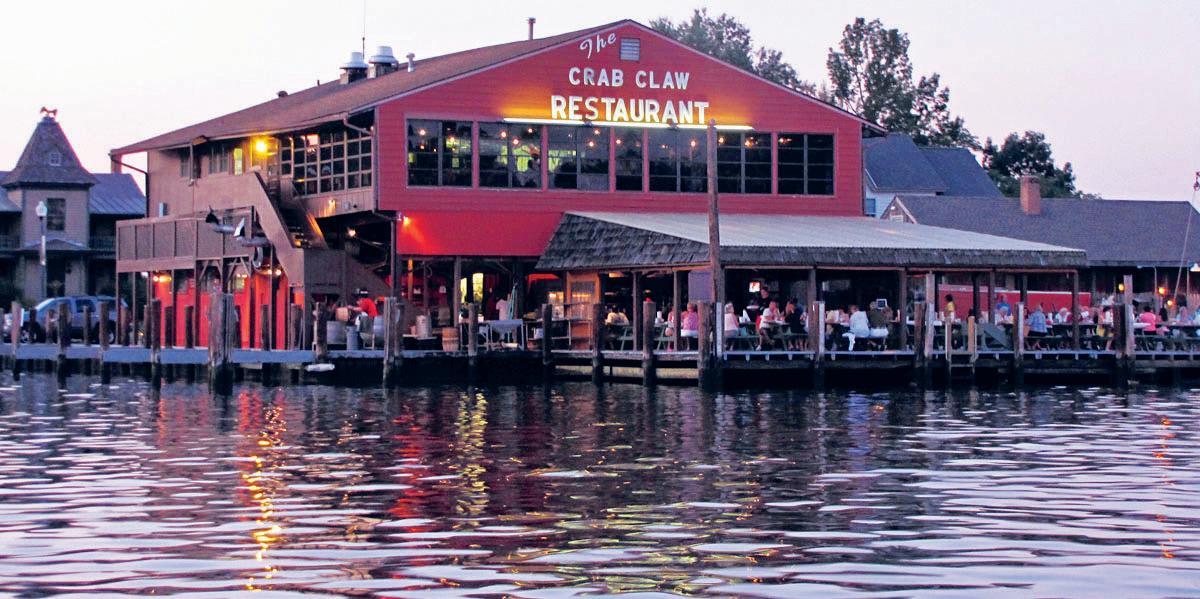
Perhaps rebellion was in Errol’s genes. Though intelligent, he needed his father’s connections to gain admission to a succession of schools. Disinterest in schoolwork accompanied a nettlesome genius for pranks. Classmates remem-




bered him as a “large precocious lad…a person you’d look at twice. Handsome even as a boy of twelve… His main attribute was that he was keen on girls.”
His Tasmanian high school remembered him as a forger of school papers with “contempt for convention and a desire to shock.” When grades and pranks ended formal education at sixteen, his professor father found him a dull clerkship in Sydney, which he fled after “borrowing” petty cash and betting slow horses. Hearing of a gold strike in New Guinea, he headed at eighteen to that primitive jungle territory. According to the biography Inherited Risk , besides prospecting, he survived five years on his wits as



Oxford is one of the oldest towns in Maryland. Although already settled for perhaps 20 years, Oxford marks the year 1683 as its official founding, for in that year Oxford was first named by the Maryland General Assembly as a seaport and was laid out as a town. In 1694, Oxford and a new town called Anne Arundel (now Annapolis) were selected the only ports of entry for the entire Maryland province. Until the American Revolution, Oxford enjoyed prominence as an international shipping center surrounded by wealthy tobacco plantations.
Today, Oxford is a charming tree-lined and waterbound village with a population of just over 700 and is still important in boat building and yachting. It has a protected harbor for watermen who harvest oysters, crabs, clams and fish, and for sailors from all over the Bay. For a walking tour and more history visit https://tidewatertimes. com/travel-tourism/oxford-maryland/.

a “Cadet Patrol Officer, slave recruiter, dynamiter of fi sh, trapper of birds, manager of coconut and tobacco plantations, air cargo clerk, copra trader, charter boat captain, pearl diver, diamond smuggler, and correspondent for the Sydney Bulletin.” Of all these, seafaring and writing became lifelong obsessions.
Flynn said, “If you spent more than five years in New Guinea… you’d never be able to get out; your energy would be gone.” He briefly revisited Sydney, where filmmaker Charles Chauvel was planning Australia’s first full-length talkie, In the Wake of the Bounty. Chauvel glimpsed a newspaper photo of
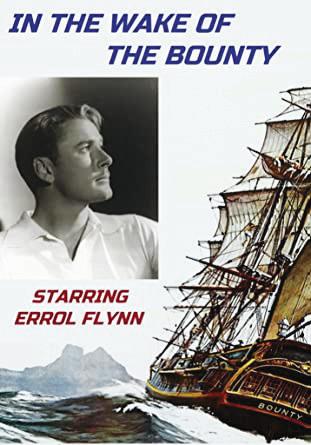


Flynn and tracked him to a hotel bar, finding “He was the perfect Fletcher Christian, but could he act?” A grinning Flynn said, “I’ll try anything once.”

Scenes of Flynn in a comical blond wig were later cut, but he’d caught the acting bug. He sailed from Australia for England in no particular hurry. He and a newfound mate (later found to be a German spy) stopped en route in Hong Kong, Saigon, Penang, Malaya, Colombo, Madras, Djibouti, Suez, and Marseilles.
Reaching London, Flynn searched unsuccessfully for work acting. When his New Guinea gold dust ran out, he joined a repertory company in Northampton. After appearing
on stage, he asked another cast member, Peter, how he’d done. Peter said he assured Errol he’d been fine and Errol gave him “that smug, selfsatisfied smile of his, a debonair tilt to his head, and said, ‘What a relief, Pete. This is the first time I’ve ever been on stage in my life!’”
In seven months of bit parts, Flynn learned stage basics and curtailed his Australian accent. His stage run ended the evening he turned up drunk and reportedly took a swing at the stage manager (the producer’s wife). Unfazed, he told a colleague, “I promise you, within a year I shall be in Hollywood and I’ll marry a film star and then I’ll be on my way.”
Reaching Hollywood, Flynn

promptly fulfilled his prophesy, marrying the first of three wives, film star Lili Damita. With her backing, he scored the lead in a major film. Jack Warner cast the ardent sailor and mutineer’s descendant in a part he was born to play: Captain Peter Blood, fictionalized portrayal of actual buccaneer Henry Morgan. Warner said, when he saw Flynn, “I didn’t know if the guy could act, but he was handsomer than hell and radiated charm, so I hired him on impulse.”
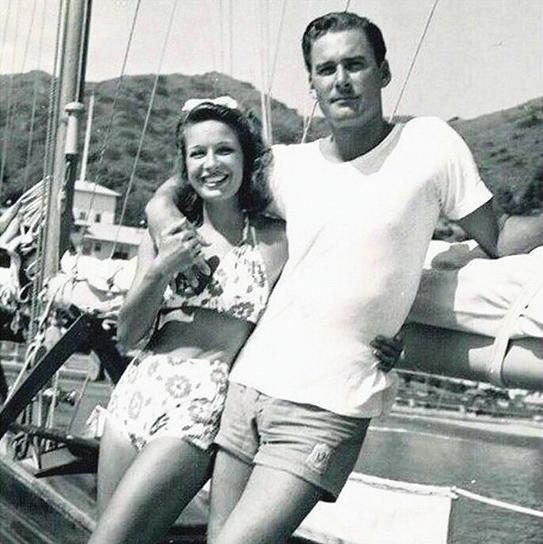
As if Flynn’s journey weren’t colorful enough, Hollywood publicists further embroidered his history, undoubtedly helped by
Flynn himself. A habitual diarist, Flynn blended fiction and nonfiction so they can never be entirely separated. He ultimately penned stage- and screenplays, novels and autobiographies.
After relishing his initial film success, Flynn came to resent Warner Bros.’s studio system, which typecast him in costume dramas, war pictures or Westerns. He dulled disappointments with vodka and a swashbuckling lifestyle that mirrored his screen image while trusting advisors to tend business matters. Thus, Lili scored a brutal divorce agreement that ultimately led to his bankruptcy while making her a millionaire. Between her vengeance and the lifelong egobashing from his mother, Flynn was never able to trust a mature woman, though they pursued him relentlessly. He hoped in vain to find privacy aboard Zaca. After a scientific research cruise with his father, a
biologist, the elder Flynn reported, “Women swam naked out to the Zaca and begged to come aboard.”



Frequent costar Olivia de Havilland said, “Flynn was a sex symbol as much as Marilyn Monroe, taken advantage of by the studio.” After he and Vincent Sherman worked together on The Mask of Demetrios, the director concluded, “He wanted more than anything to be thought of as a good actor, but to cover his hurt, he pretended most of the time that acting and his career didn’t mean much to him. I became aware for the first time that I was dealing with a man who was far more sensitive and complex than I had ever imagined.”
After his adventurous beginnings, Flynn felt stifled: “The stereotyped
European. When the man’s checks bounced, Flynn sank his last cash in futile hopes of saving the project, then fled Switzerland.
roles I played stamped out of me the ambition to do finer things or expect to be able to do them in Hollywood… taking all that money for reciting ten or twelve lines of nonsense a day.” In 1951, Flynn declared himself “fed up with…always being harassed by tax-gatherers, ex-wives or mistresses-to-be.” He sailed to Europe to act and produce films for himself. The last of several ill-fated projects was William Tell, with financing expected from a reputedly wealthy
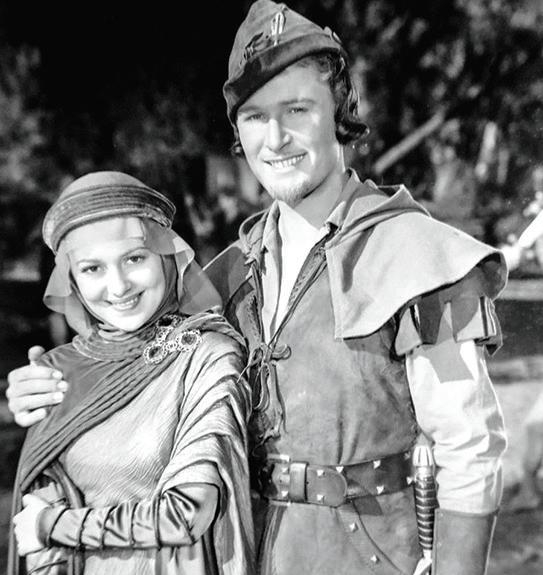
Longtime crony Bruce Cabot, whom he had given a small role, now turned on him, pursuing Flynn and an inept partner to Rome and suing for wages. Bailiffs seized their cars and their families’ clothing. Penniless and betrayed by a mate, Flynn called his longtime Hollywood business manager and learned he’d just died of cancer, his last words: “Tell Errol I’m sorry.” The trusted financial advisor had exhausted Flynn’s resources buying himself two new Cadillacs, a private plane and two houses. Flynn took refuge on Zaca, mooring around the Mediterranean, ready to weigh anchor at a moment’s notice.
Three years earlier, he had been warned his liver was failing, but he persisted with vodka and painkillers. In 1956, he returned to a one-bedroom rental in the fabled Garden of Allah apartments, his original Hollywood residence. The ex he called “Tiger Lil” had acquired

All Month - ‘From Colonial Past to Present, Oxford in Business’ Fri-Mon, 10 a.m. - 4 p.m. Oxford Museum, 101 S. Morris St. More info at www.oxfordmuseummd.org/
All Month - Pope’s Tavern - Tuesday Pizza night, Thursday Open Mic night; 503 S. Morris; 410-226-5240, www.oxfordinn.net/dining/
7/1 - Cars and Coffee - Come out and enjoy cars, coffee, and camaraderie. Sponsored by Prestige Auto Vault, Doc’s Sunset Grille and Eat Sprout. Oxford Community Center. Free; 8:30 -10:30. www.oxfordcc.org; 410-226-5409.
7/1 - Mystery Loves Company 32nd Birthday Party - with authors Susan Reiss and Bill Rapp. Noon - 2 p.m.; 220 S. Morris St. www.mysterylovescompany.com or 410-226-0010.
7/3 - Fireworks - Begin around 9 p.m. Bring a blanket or lounge chair and set up along the Strand or in Town Park. Rain date 7/5 .
7/7 - Justin Ryan - on the porch at Pope’s Tavern; 503 S. Morris; 410-226-5240, www. oxfordinn.net/dining/
7/8- Memories and Musings: Library Lore - Oxford Museum, members only. 5 - 6:30 p.m., St. Paul’s Church. RSVP to theoxfordmuseum@gmail.com by 7/5.
7/9 - Pancake Breakfast - Oxford Volunteer Fire Department, 8 - 11 a.m.
7/10 - Bring Your Own Piece Furniture Painting Class - $65, includes 4 oz. jar of paint.
5:30-8:30 p.m. Limit of 3 participants. The Treasure Chest, 111 S. Morris St. For more info or sign up, go to www.treasurechestoxford.com or call 410-924-8817.
7/15 - An Old Fashion Carnival - Cotton candy, sno-cones, lemonade, hot dogs, hamburgers, carnival games, tractor rides, fire truck display and more; OVFD Auxiliary; 2nd St & E. Pier St., 11 a.m. - 2 p.m. For information call 302-233-8450.
7/16 - Oxford Paint Out - A Plein Air Easton Event - Painting all-day, all around town; exhibit and sale at Oxford Community Center, 5-6:30 p.m. www.pleinaireaston.com/
7/20 - Beginner Chalk Mineral Paint Class - $45, all materials provided. 5:30 - 8 p.m. Limit of 3 participants. The Treasure Chest, 111 S. Morris St. For more info or sign up, go to www. treasurechestoxford.com or call 410-924-8817.
7/25 - Ice Cream For Breakfast Day - Scottish Highland Creamery beginning at 9 a.m. Breakfast themed ice cream flavors. Wear you’re your PJ’s and get free sprinkles. 111 S. Morris St.
7/26 - SILK All-in-One Chalk Paint Demo - 5:30- 6:30 p.m., $10. Limit of 6 participants. The Treasure Chest, 111 S. Morris St. For more info or sign up, go to www.treasurechestoxford. com or call 410-924-8817.
7/28 - Book Luncheon with Laura Lippman - Doc’s Sunset Grill. Presented by Mystery Loves Company. https://lauralippman.com/ ; Tickets available at www.mysterylovescompany.com/ or call 410-598-7267.
Check restaurant and shop websites or facebook for current days/hours. Oxford Kids Camp in session. Please drive carefully!
his seven-acre Mulholland Drive estate, where he had formerly treated friends and freeloaders to tremendous fun. As middle age, alcohol and ailments blurred his memory and features, some magic still clung to his name. A new agent found him roles in several fi lms that fi nally confi rmed his acting ability but were insufficient to satisfy his debts.
In 1959, during the process of saving Zaca from an IRS tax lien, Flynn’s heart gave out. Fifty years old, he had once claimed to be the most litigated-against man of modern times. If so, Zaca was the mostentangled object. She languished nearly twenty years after his death,
beset by claims and counter-claims, stripped by souvenir hunters. In 1978, her rotting hull was rescued and restored for $6 million by a Monaco-based businessman. Reputedly haunted by music and laughter, locals required two exorcisms, Anglican and Catholic, to drive Flynn’s ghost from Zaca.
Forty-some years ago, A.M. Foley swapped the Washington, D.C. business scene for a writing life on Elliott Island, Maryland. Tidewater Times kindly publishes Foley’s musings on regional history and life in general. Published works are described at www.HollandIslandBook.com .




 by Sam VanNest
by Sam VanNest
Self-described “Pickleheads” like Brandon Mackie have said that the sport is “magic.” There must be something to that, because in the past three years pickleball has grown to be the most popular game in the United States, with 36 million folks and counting getting in on the action.
The sport gained initial popularity during the pandemic as a safe, responsible activity to stay social and active. Now that lockdown tensions have eased, pickleball has eclipsed the outdoors-only re -

strictions of social distancing and has grown exponentially. From its humble backyard beginning in the mid-’60s as a Seattle-area game for families, it has gained momentum more recently as a game among retirees. It transcends age, gender and skill level, however, and is an approachable and highly accessible sport. “It’s a social activity as much as a sport,” said Mackie, emphasizing the communal aspect that continues to propel its popularity. It’s a simple, fun and dynamic game.
Pickleball is usually played in
“doubles” format—that is, two players on either side of a low net, on a court the size intended for badminton, and with rules similar to tennis or ping-pong. Mackie further espoused the diversity of the sport: “Beginners can go out their

first time, learn the game, have fun and even win a few games. But advanced players stay challenged and keep coming back for more. This unique quality is a big reason why pickleball continues to grow. It is a sport for all ages.” Cofounder of the Pickleheads website, Mackie is committed to increasing the awareness and accessibility of pickleball. The page directs users to courts based on locality, lets them organize games and even provides links to recommended gear.

All you need to learn the sport at the Easton Family YMCA on Washington Street is a decent pair of sneakers, an open mind and a little free time. The Y offers a free class on the basics available even to nonmembers the first Friday of every
A name you can depend on to provide faithful, professional Chimney and Hearth Services

month. The Easton Family YMCA on Peachblossom Road has ten available outdoor courts and four indoor to accommodate the growing popularity of pickleball in the area, with several alternate venues, such as Causeway Park in Oxford, the Pauline F. and David W. Family YMCA in Cambridge, the Cambridge Tennis Park and the Perkins Family YMCA in St. Michaels. The game is so in vogue that it requires grassroots organizing.
Nick Papson, an official pickleball ambassador to the Eastern Shore appointed by the USA Pickleball Association, told me, “The game has been so popular recently because it’s cheap and easy to play, easy to learn and a lot of fun. Pick-

leball has something for everyone, at every skill level.” Nick’s position is on a voluntary basis, and his enthusiasm for the sport is palpable. “My job as an ambassador is to grow the game in this area and foster the passion.” He emphasized the mix of folks in this community who play together: “In general, pickleball is a great social leveler;


you just have to love the game to get in on the fun.” To his point, on an overcast Saturday morning spent at the Peachblossom YMCA outdoor courts, I met a doctor, a pastor, a window washer and a lawyer, among many others, all at different levels of play and all brought together by their love of pickleball. The games that day were more about having fun than competing, but that’s the diversity of the sport at its best. Although Nick has his hands full organizing tournaments and competitions in the area, some folks prefer the more casual, recreational side of the game.

“For me, the social aspect is the
real draw,” said Royal Oak resident Elizabeth Tong. “The people that I’ve met through the local pickleball community have been incredible. They’re like family.” An admitted beginner to the game, Elizabeth regularly attends the intermediate-level gatherings and described one day when a woman of 92 years was her most formidable opponent. Elizabeth told me of the many friendships she has made

on the courts, but one in particular that stood out to me was that of her new friendship with another local woman who, it turned out, had attended the same alma mater, and who also gave Elizabeth and her husband a West Coast connection for when they travel there. On their latest jaunt, the families met for lunch in Washington State, very near the home of the sport.
“It’s all about the networking, the people you meet,” Bozman resident Kevin Higginbotham told me. A retired Marine, Kevin is now doing what he is most passionate about: training dogs and playing pickleball. He is very active and competitive with the sport, but the community offers something for


all levels, and he is able to compete with other players of his skill set, “And much better,” he joked. I had the pleasure of meeting Kevin after I interviewed Elizabeth Tong. They are pickleball buddies, and she recommended him as a dog trainer. He is now helping me with my rambunctious Heeler pup. Even in writing this article, I benefited from the magic described by Brandon Mackie.
On that dreary but dry Saturday morning that I watched and listened to the game and its enthusiastic participants, the magic was substantial, particularly when a woman told me how pickleball brought her out of a depressive pattern. Michelle Jacoby suffered





from Seasonal Affective Disorder until she discovered the game and the vibrant community that maintains it. “The winter months are now enjoyable because of pickleball and the people that I’ve met by playing.” Several folks that morning told me that if it hadn’t been for the sport, the lonesome months of the pandemic would have been difficult to bear. Indeed, it seems there is something remarkable about this game and its players.
As the sport continues to grow in our community, both socially and competitively, the original, family-oriented roots of pickleball remain strong. According to Easton resident Fran Pobletts, “When my daughters visit from out of town, they know to bring their paddles!”

Sam is a writer and teacher with a BA from St. Mary’s College of Maryland and an MA in English from the University of Oregon. He lives in Easton with his family.




The Plein Air Easton (PAE) Art Competition and Festival is the nation’s largest event celebrating the art of plein air painting. Each July, thousands of artists and art lovers from across the country flock to Talbot County to admire and purchase art that showcases the beauty of the Eastern Shore’s rural and maritime landscapes. Join us July 14–23 for the 19th PAE Art Competition and Festival!

This year’s PAE festival has something for everyone: collectors, enthusiasts and artists of all levels.
“We want to engage our visitors with exciting and educational activities as the competition artists create their premium pieces,” said PAE Coordinator Marie Nuthall. “We invite the public to watch a demo, listen to a panel discussion, browse JFM’s pop-up framing shop and participate in the offerings through PAE Headquarters and the downtown galleries. Most are free and are open to everyone.”
PAE’s main competition will include 58 juried artists painting for big cash prizes. The competi -
tion will culminate in hundreds of paintings created during the week being exhibited at the Academy Art Museum and across the street at PAE Headquarters. Local Color, a gallery exhibit for juried local artists, is sponsored by The Working Artists Forum and is showcased in the Christ Church Parish Hall. In addition, there are parties for collectors ($), free art demonstrations, live music, an all-ages “Quick Draw” and a day for young artists: the “Next Generation.” For a complete list of events, visit pleinaireaston.com .
All events FREE and open to the public unless noted otherwise ($)
July 14: PAE Kickoff Party
– Shop and dine all day and earn raffle tickets for every $25 spent. From 5–7 p.m., enjoy an active gallery walk and merchant party in downtown Easton, live music alongside the Tidewater Inn and a raffle drawing at 7:15 p.m. Participate in an immersive Shake-

speare experience at 8:30 p.m. on Harrison Street and/or bring your paints and paint a nocturne scene beside the competition artists. All fun, all free, open to all ages.
July 16–23: Plein Air Easton Headquarters (40 S. Harrison St.) – art exhibit, art demos, panel discussions, festival information, pop-up vendor: JFM Frames
July 22: S. Harrison Street (from Dover to South) – Quick Draw competition, $10 to register and paint, free to peruse the exhibit, live music
July 22 & 23: PAE Headquarters, Academy Art Museum, Christ Church Parish Hall – art exhibits and sales
July 22 & 23: Avalon Theatre – Next Generation art activities, Quick Draw for 18 and under
July 23: PAE Headquarters, Academy Art Museum, Christ Church Parish Hall – art exhibits and sales; PAE Headquarters –Small Painting Sunday exhibit and sale, Judge’s Talk









True to its name and location, the Chesapeake Film Festival (CFF) is committed to screening and discussing environmental documentaries germane to the Chesapeake Bay Watershed.
The 2023 LIVE Festival (Sept. 30–Oct. 1) includes A Passion for Oysters by Tom Horton, Dave Harp and Sandy Cannon-Brown and WindShipped by Jon Bowermaster. These awardwinning filmmakers will introduce their films and join in a panel discussion after the screenings.
Oysters are nothing much to look at. Yet the passion for this humble shellfish has inspired shooting wars, piracy, social and environmental conflict and libraries of legislation for more than two centuries. Why? In A Passion for Oysters, Horton suggests the answer may lie in the Choptank, the largest river on Maryland’s Eastern Shore. Within a few dozen square miles of its lower sections where it meets the Chesapeake, the Choptank contains all the pieces of the oyster puzzle.
Writer Horton, photographer Harp and fi lmmaker Cannon-Brown are well known to CFF attendees. Several of their documentaries have premiered at the Festival, includ-
ing Beautiful Swimmers Revisited, High Tide in Dorchester, An Island out of Time and Water’s Way.
To reduce shipping’s impact on the environment, some companies are turning to renewable energy. Bowermaster’s fi lm introduces us to the 64-foot schooner Apollonia, a sailing vessel that has been delivering goods up and down the Hudson River for 65 years without using fossil fuels. WindShipped is an ode to a time when there were 1,200 such boats on the river each day.
Bowermaster, the founder of Ocean 8 Films and One Ocean Me-

dia Foundation, makes fi lms about climate at home in the Hudson Valley and around the world. His podcast, “The Green Radio Hour with Jon Bowermaster,” has recorded more than 150 episodes with environmental activists, community leaders and friends from his vast Rolodex of travels.
Also included in this year’s environmental live presentation will be Flights of Fancy, a new short fi lm by CFF board member Irene Magafan about the elusive monarch butterfly. The Life and Legend of Jane Goodall, a fi lm by veteran documentarian Judy Hallet, will be shown at the Ebenezer Theater on Sun., Oct. 1.
Following the screenings on Opening Night, Dr. Ryan Conrath, a professor of fi lm at Salisbury University, will moderate a panel discussion with the fi lmmakers about the art of documentary fi lmmaking and its contribution to environmental stewardship.


A VIP reception precedes the environmental block of fi lms on Sat., Sept. 30. VIP tickets admit the holder to the reception and all the fi lms in the LIVE FESTIVAL. VIP tickets, along with tickets to the individual screenings, go on sale later this summer.
For more information, visit chesapeakefilmfestival.com or contact Executive Director Nancy Tabor at 443-955-9144.


Kibby & Steve Dalton
Owners of Easton Fit4Life www.EastonFit4Life.com

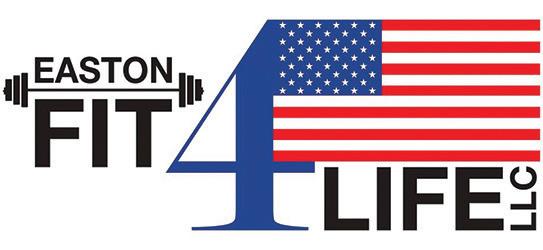
“We are a consortium of Personal Trainers each equipped with our own training styles and fortes of experience and knowledge. Our passion and intention is in helping each of our Clients to achieve their very best personal health & fitness outcomes.”
Individual Personal Training
24/7 Access to Cardio Equipment
Personal Training - Solo, or Small Group
Our Trainers
Kibby Dalton · Brittany Harrison · Sierra Correa · Kelsey Basel
Sandi Whitehurst · Rena Silbert · Lyn Sutton · Laura Yablonski
Coach BJ Miller · Greg Yablonski · Greg Terry · Anthony Duckery
Jess Newell · Craig Dunn and John Labelle
Very private environment ~ no crowds and no waiting on equipment
We work with all ages and body types
8859 Mistletoe Dr., Easton 443-786-2320

Transcribed, edited and with notes by James Dawson from an old manuscript he found
As late as the 1860s or ’70s, Deal’s Island, Maryland, was a camp meeting ground. Near the Methodist church was a “comely grove of pines, which alack-a-day, some artist had caused to be removed. A short distance beyond was another grove through which the island highway passed. This also some enterprising landscape artist has caused to be removed—I say artist,
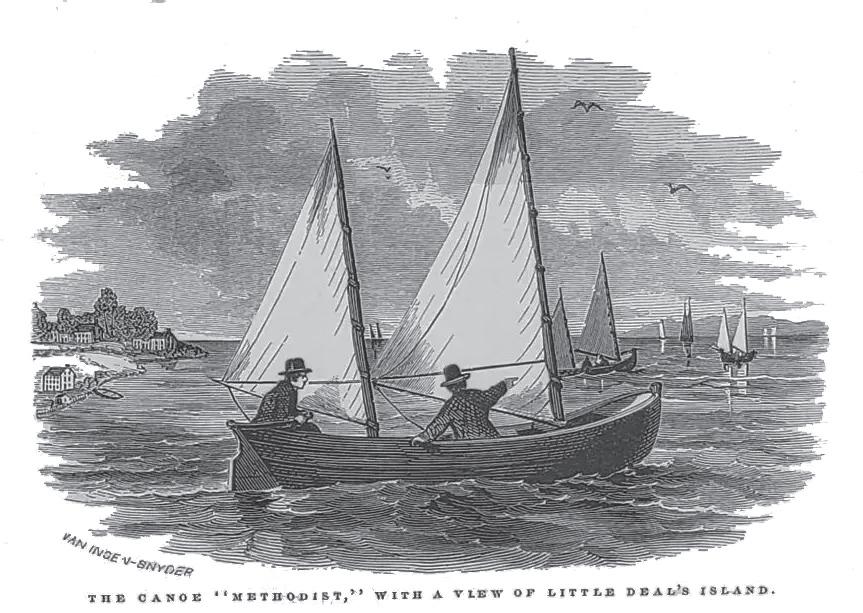
for I cannot conceive of a man with average aesthetic taste perpetrating such an enormity.”
The trees in the grove were beautiful, smooth-barked, straight as a mast, and immensely relieved the monotone of the flatness.
Doubtless in “The I’lent’s” palmy days these groves were larger and very attractive.
The region is a Methodist region,
and in those days camp meetings were religious gatherings and were very popular.
Baltimore sent excursions, the county town emptied its stables to supply conveyances (for those were horse and buggy days).
The neighboring islands sent their contingents. They come from Tangier, Smith’s Island, Holland Island and even from Virginia.
The crowds went for various reasons; some for the stimulation of religious interest; some to promenade or to “meet the folk,” some for the general exhilaration socially, and some for sea food and the pleasure of the shore.
Primarily, the camp meetings were instituted to reach larger audiences with the Gospel message, and to stimulate Christian fellowship and spiritual profit, and were very successful in these things in early days, before there were so many diversions and monetary interests or social sports.
In those days the people were not so sophisticated, perhaps, but were wholesome.
Among the religious leaders not only of the I’lent but of the whole coastal region from the Wicomico to the southernmost island of the sound, the most eminent and devoted was the notable old preacher, Joshua Thomas, locally called “Joshwy.” His tomb is near the
Relish the power of pedal propulsion, in both forward and reverse. The effortless speed of the MirageDrive 180 with Kick-Up Fins combined with the streamlined, sleek hull of the Lynx make for a truly epic ride. Kick it up a notch, as you swiftly skim across the water's surface, carving turns and leaving the world behind. The Lynx's flat-bottom design provides confidence-inducing stability and ultimate maneuverability. Only 45 pounds!




entrance of the Methodist church; his work had lasting qualities; his parish included the islands which separate Tangier sound from the









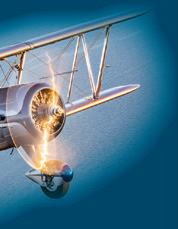



bay, proper, to gather with the locals of the sound. He was notable for singleness of heart, and unfaltering faith. Fifty years ago, his imprint was still visible on the I’lent people. He was practically an itinerant, and his canoe was known in all the places along Tangier sound. At the Centennial celebration in Philadelphia, 1876, his old canoe, the “Methodist,” was exhibited and a pamphlet telling of his life and work were issued. He was honest and frank and unaffected. Any high school pupil knows more of history, belles lettres, or the theories and assumptions of science than he, but few on the hustings or in legislative halls equaled him in powerful oratory; few any where equaled him in







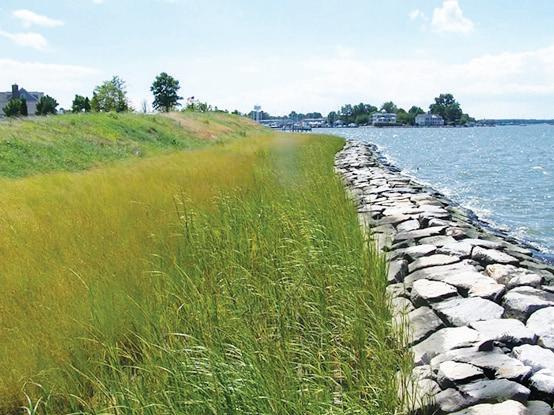


faith or the native discernment. He was “unsophisticated” but he was a Christian, a man of faith and power. The British knew him, heard him, and though, at first they ridiculed his warnings, they became convinced that he was a prophet, as did many of the people.
It would interest the reader to have presented here the incidents of his honest old man’s life, but space forbids, yet in all justice I should tell of his faith, his simple hearted converse with the Lord, and of his warnings to the British, whose ships rode off against Tangier where the old man often preached.
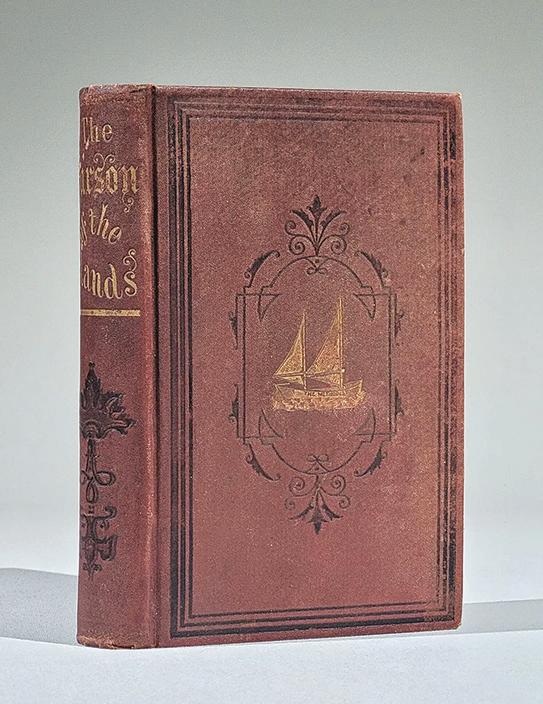
The following incident will indi-
cate his simple implicit faith in whatever he found the Scriptures said.

He was due to speak at Tangier, but before Sunday rolled around, he was smitten down with a violent attack of rheumatism so that he could not walk.
The time grew near for going to Tangier Island, and he was unable to walk. He promptly sent for his Christian friends, explained to them that passage in James and said, “Brethren, pray for my healing that I may be able to preach Sunday
and do as St. James said; anoint me with oil.
“I have not the special oil, but there is some goose fat. The prayer of faith will heal the sick.”
They did so and before they were done anointing him, he leaped from the bed exclaiming, “Praise the Lord, he has healed me.” He went to Tangier.
The following incident will amuse but there was nothing but simple hearted communion in it, as Joshwy saw it.
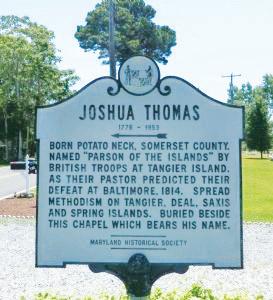
His wife died. He felt the loss in many ways but especially in the hampering of his work.

He had children who needed adult care, and he could not go forth to preach, and leave them.
He prayed and waited long. One day one of the Christians came to him and having set forth “Joshwy’s” need, advised him to marry and in the congregation intimated a nearby spinster. Joshua praised the Lord for the advice given, and promised the friend to think it over, so he did. He took it to the Lord, asking Him to guide him in the selection of a wife
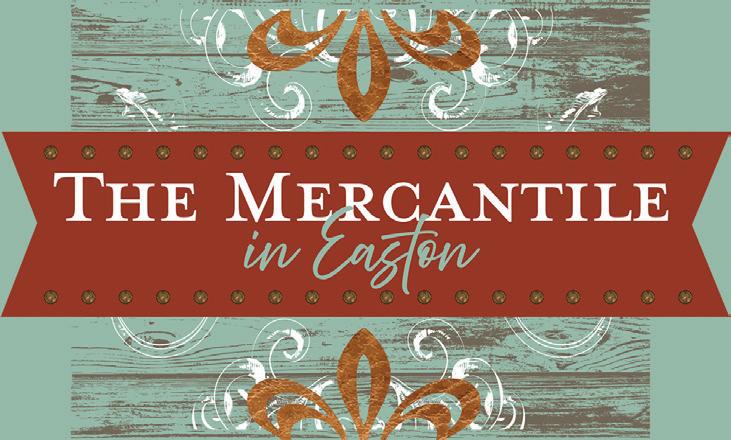



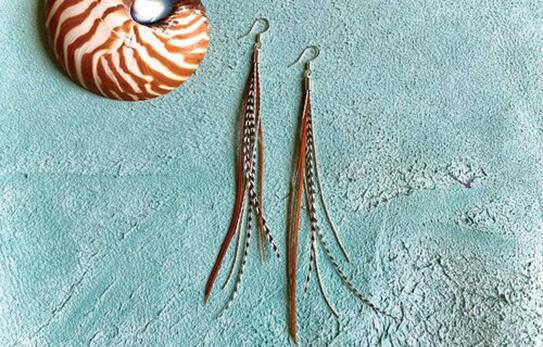
While he prayed the spinster’s image loomed up before him. “O no, Lord,” he cried, “not her; she’s too ugly.”

Again he prayed, and again the spinster’s eyes looked upon him; again he put it aside.
A third time he prayed; and a third time the spinster’s face rose to view. Joshua convinced this was the Lord’s answer, cried out, “Thy will be done; I don’t care if she is as ugly as a mud fence, I will marry her,” and he did, to his comfort and well being.
Of course, I tell these incidents as mother told them to me sixty years (perhaps) ago.
Anyone interested in the history of colonial days and the religious labors and the loyal patriotism of the coastal region of Tangier will find great pleasure in the notable career of Parson “Joshwy” Thomas; and if he enters into it with discriminating apprehension, no doubt a shade of subtle beauty and charm will settle on the waves and marsh grasses, and the I’lent will seem to expand before his eyes, and to take on unexpected importance.
Joshua Thomas was more nearly like an itinerant apostle, than a circuit rider.
As related, his parish extended the length of Tangier sound (islands and shores) to Tangier Island, which was visited by President Wilson, and, so to speak, was rediscovered, so long had interest in it lapsed; but in 1812 it needed no discoverer. The British anchored near it and Joshua Thomas made his voice heard in British camp or squadron and up and down the colonial shores. They were anxious days, thrilling days and noble days.
The British were truculent and as their ships rode at anchor or ascended the bay they often fired upon the villages in sheer spite.
I have seen chain shot at Holland’s Island which were fired by the British in 1812–14.
Joshua had no gun, but in those days he fired the hearts of his countrymen, and in the imagination of his words, lent tons of munitions to the struggling clusters of patriots. He



was more than a powder magazine to the colonists on the shores.
He preached fearlessly to the British soldiers warning them to repent as sinners before God, and also of the futility of their threat to take Baltimore. The soldiers liked him but regarded him as a visionary though honest man. At last the time came to attack Baltimore camp. New troops were assembling and anchoring over against Tangier Island. Parson Joshua was there. The night before all sailed for Baltimore the troops heard the old preacher deliver a special sermon. When he arose it seemed a prophet had arisen.
He reminded every man of his need to repent and be converted. That now was the accepted time, that many would be gone on the morrow, for war was no partial destroyer.
He admonished them of the special iniquity of this war, and that they were seeking to destroy a free people, which was a great evil.
He warned that the people of the Western world were not a helpless infant nation. Few indeed were their ships and guns, but God was their defense and strength, and that the prayers of the Godly were a-wing, and ascending to the throne of the Righteous and Holy One.
His people were a praying people, he cried.
The old man looked majestic with blazing eyes, and lifting his right
hand heavenward, he shouted in the assurance of faith, “Return and do not harass a free people; return, for your cause is not just; return, for God is in his heaven and hears our prayer. Return, return, O you deluded souls! Yo’ c’yant take Baltimoah.”
“Or will you go up to battle? Go up then to slaughter; go up to defeat; Go up to failure, Go up to wounds and death, God hears our prayers and will content us and deliver.
Yo’ c’yant take Baltimoah.”
Such was the strain of the old man’s discourse that impressive hour.
The ships sailed away confident and proud.
The men had been impressed, but liked not to retain the old man’s warning.
Many a jest was born to camouflage that impression. Often there was loud laughter on board and one would imitate and cry, “No men, yo’ c’yant take Baltimoah. Yo’ c’yant!”
British regulars before raw pioneers—“yo ’c’yant! It’s a joke. Ha, ha, ha!”
The strife was not long. A man who has been knocked down is not long in falling.
So it was not long till white wings of men of war flapped over Tangier’s waters.
The British were back, balked and defeated. They did not, they could not take Baltimore.
They hailed the old parson as a prophet. They had heard him and


his words come to pass.
“Surely,” said they, “he is no visionary; in all truth, he is a prophet, a mighty prophet.”
Joshua Thomas the Communities of the Delmarva Peninsula by Adam Wallace was published in 1861. As the dedication states, “All in every place who knew and loved this somewhat eccentric but singularly excellent Servant of God and who were pleased and profited by his long and successful ministry…”
As a prophet he passed among them; they wished to take him back to England with them, for verily he was a prophet.
Afterword by J.D.:
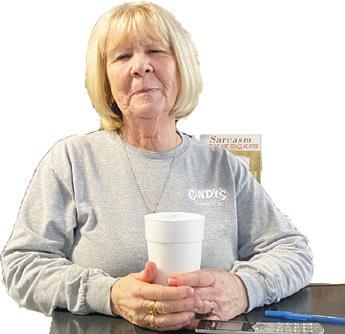


The biography Parson of the Islands: A Biography of the Rev. Joshua Thomas Embracing Sketches of His Contemporaries and Remarkable Camp Meetings, Revival Incidents, and Reminiscences of the Introduction of Methodism on the Islands of the Chesapeake and
There is some confusion as to what his title should be. Joshua Thomas was ordained as an Elder at the Philadelphia Annual Conference in 1835. Although he is known far and wide as the “Parson of the Islands,” his biography mostly calls him Brother Thomas. However, the title page and frontispiece of the book call him Reverend Thomas, and it is Reverend on his tombstone.
Wittman, MD | $2,795,000
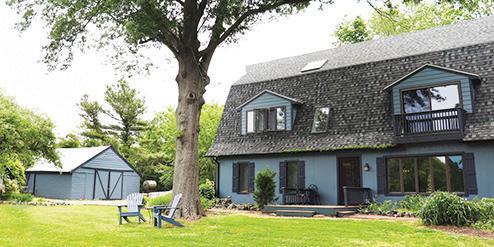


Welcome to the historic Jane Lowe Estate, an idyllic set of two waterfront properties near St. Michaels that present unparalleled opportunities for escape, recreation and relaxation. Soak up quiet sunsets, watch heron and eagles in a sheltered cove and boat to Tilghman Island, or slide kayaks or paddle boards right into the water from your own sandy beach. The 2,180 square-foot farmhouse has breathtaking views of the pool and serene waters of Rabbit’s Cove. 3 bedrooms and 3 full baths. The house dates back to the 1800’s and has been tastefully updated with modern comforts while preserving its timeless charm.
The 3,120 square-foot converted barn offers an open concept kitchen and living room, 3 bedrooms with a loft, 3 newly remodeled bathrooms, ample rooms for sleeping and hosting guests, a massive game/great room with two balconies and is surrounded with grassy front and back yards. This property is being sold as a compound with 8478 Jane Lowe Rd. Both properties for $2,795,000 .00 This property has been an Extremely successful vacation rental, sleeps 12. Request more information - Call Dawn Lednum 410-829-3603

Of course, he could have all of those titles in succession.


Brother, Parson, Elder or Reverend Tomas was born in Potato Neck in Somerset County, Maryland, on Aug. 30, 1776. Before Thomas, the islands and shores of the lower Chesapeake Bay were rough and rowdy places with names like Devil’s Island and Damned Quarter. After Thomas brought religion to the area, aided by his sailing to the islands in his log canoe “The Methodist,” those places became Deal’s Island and Dames Quarter.
The British attack on Baltimore on Sept. 12–15, 1814, ended in failure and helped to end the War of 1812, just as Thomas had prophesied. Wainwright calls him an old

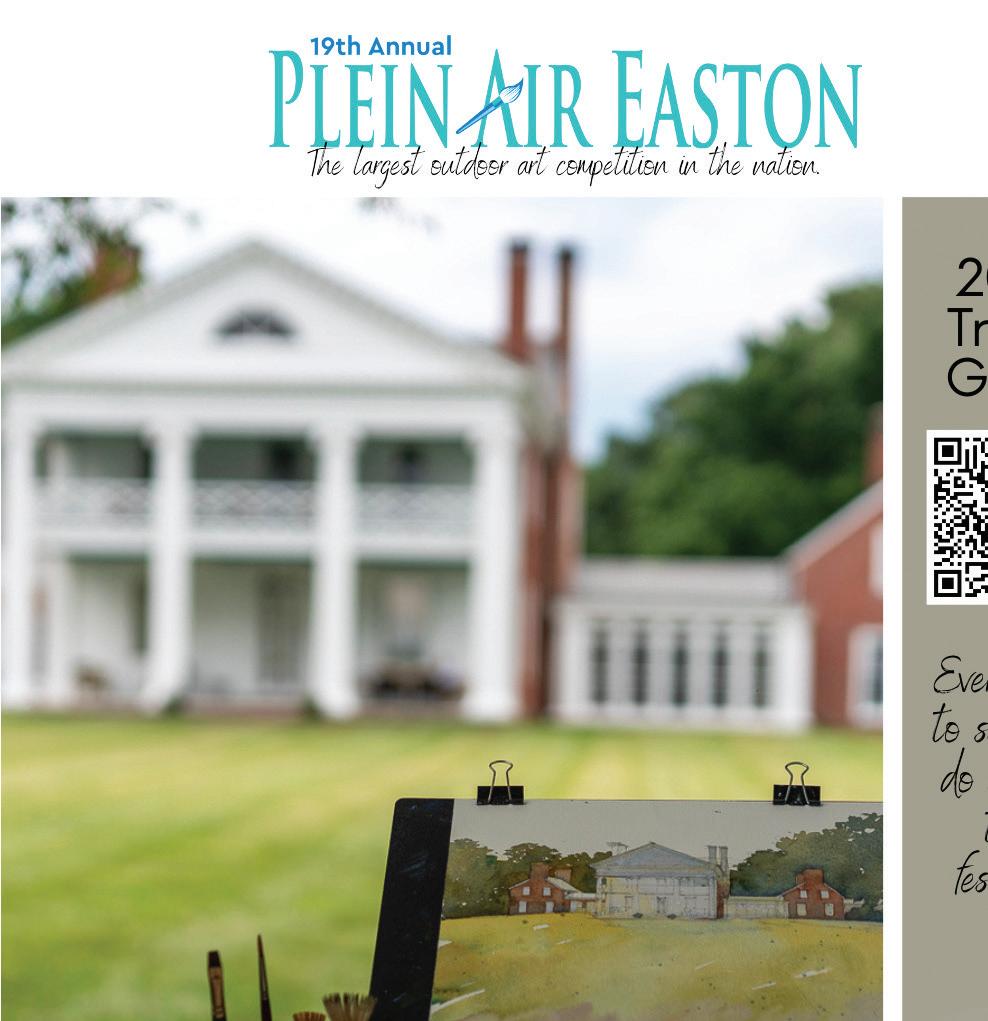

man, but actually he was only 38 when he preached to the British. His ministry ended at 2 o’clock on Oct. 8, 1853, aged 77 years, 1 month and 18 days. He is buried in the churchyard of St. John’s M.E. Church and Joshua Thomas Chapel on Deal’s Island. The chapel is the smaller building to the rear of the church, and Thomas’s grave is by the front entrance.
Thomas’s biography, first published in 1861, is still in print. The anecdote that Wainwright heard from his mother about how Thomas married his second wife is not in the official biography. And his exhortation to the British on the eve of their
attack on Baltimore on pages 146 and 147 is given differently. Thomas is quoted in his biography as saying, “I told them it was given me from the Almighty that they could not take Baltimore, and would not succeed in their expedition…You cannot take it! ” So the reader is left to wonder if Wallace’s version was put into a more formal and refined literary form for the book, or if Wainwright’s more lively account of “Yo’ c’yant take Baltimoah!” exaggerated things somewhat. Also, the official biography does not contain Wainwright’s account of some of the Brits mocking Thomas, though that could very well have happened.
Wainwright’s mother, Olivia, was born in 1824, and while she was not



old enough to have witnessed his sermon to the British in 1814, she certainly heard about it from people who did and also certainly saw him in person.
Since Brother Thomas, for all his abilities, was not an educated man, I suspect Wainwright’s version may be the more accurate.
His log canoe “The Methodist” was either 16 or 27 feet long, depending on the account, and was said to have been hewn from one large pine tree by Hance Croswell of Annamessex in 1806. After the parson’s death, it was in the possession of Thomas’s grandson and exhibited at the Philadelphia Inter-
national Centennial Exhibition, the first official World’s Fair, in 1876. After the grandson’s death, it was sold to a Capt. Crockett of Norfolk and exhibited at the Jamestown Exposition in 1907, but it has since been lost to history and its present whereabouts are unknown. The sails were later owned by Norman Beloate of Accomack County, Virginia, who displayed them on Deals Island in 1937.
President and Mrs. Wilson visited Tangier Island in 1916 when sailing by on the presidential yacht and strolled down the main street.
• Kayak Docks
• Re-Decking
• Pressure Wash & Seal
• Boat Lifts, PWC Lifts
• Gangways
• Solar Dock Lighting
• Floating Piers
• Rowing Docks
• Kayak Racks
• Ladders
• Dock Boxes

• Piling Caps





It was beyond dark. Andy and Becky were proceeding with care, using their flashlights sparingly in case there happened to be someone else in the mine. It was unlikely. The mine had closed for the day many hours ago. But if Becky were right about what she had seen, it was possible that whatever they might find was operational full time.
That afternoon they had been part of an official group tour of the inactive mine. Their guide, Karl, had stopped and brought them together for a word. Not that the group of tourists had spread out. The hostile environment had been keeping them close. And it did feel hostile, Becky thought. The tour had taken them about 400 yards into the mine. For 200 yards they had been walking past the entrances to small working tunnels where for many years men assuming prone positions had drilled and shoveled out the veins of coal. “No claustrophobes need apply,” Andy had murmured to Becky. Talking in a normal voice was out of the question. It
seemed prohibited, as if they were in a cathedral. Everyone felt it. No one was chattering. The only sound was the soft crunch of shoes against the dirt surface packed hard by a hundred years of mining traffic.
Karl hadn’t said anything once they had all stopped, after they had focused their attention on this humorless guide they were counting on to get them in and out of this scary place. It was the sort of heavy focus that causes one to almost hold one’s breath. In doing so, they collectively felt the oppressive silence of the large tunnel they were in that had been drilled horizontally into a mountain.
The mining had started in 1906. Before that, early arrivals in Svalbard, a Norwegian archipelago 450 miles north of the mainland, 500 miles south of the North Pole, had spotted the thick, black layers of coal showing on the rocky faces of the mountains. When they weren’t covered in snow. Coal, so far north?
That morning, before the tour, Andy and Becky had visited the small museum in Longyearbyen,
the only town on Spitsbergen, the largest island in the archipelago, population 1,500 people and (it was said) the same number of polar bears. Outside the museum was a boulder the size of a dining room table that was unremarkable, a seat for visitors, until one looked closely at the uneven surface and realized it was imbedded with fossils of tropical plant leaves. It seems that some 380 million years ago, Svalbard had been located on the equator.
Karl had previously pointed out there was about 2,000 feet of mountain above them pushing down on the tunnel. Andy and Becky felt the kinetic force gripping them in the deep silence, felt it all around them, knew that, unlikely as it was, they could be suddenly crushed to death like a bunch of ants.
“Okay,” Karl had said quietly, using his practiced tunnel tour guide voice. “As quiet as it is, and I think you all can feel it, there’s a way to make it even more intense. First let’s spread out a bit, get some distance from each other so you won’t hear each other breathing. Then I’m going to ask you to turn off your headlights, all your lights, if you will, and we’ll experience what real silence, real darkness, feels like. Good? All right, let’s turn off the lights. If it’s too much,” Karl said as the lights went out one by one, “just say and we’ll light back up. We’ll try to stay dark for a whole minute.”
It seems that some 380 million years ago, Svalbard had been located on the equator.
In one of the smaller tunnels they had passed that afternoon, they had seen stacks of three-foot oak logs that had been split and arranged to support the tunnel for the worker’s safety. What they realized was that the stack of logs that had been maybe four feet high when installed, had been reduced to less than three feet by the weight those oak logs were trying to hold at bay. The logs had been compressed like sticks of butter, cracked and crushed under the pressure.
No one said anything. Breathing was hushed. There was no coughing or throat clearing. A minute that seemed like five passed. The darkness had created an almost weightless situation. Andy had felt suspended, like gravity no longer existed. Becky said she sensed no up and no down, yet their balance wasn’t affected. It was limbo. They all sensed the colossal weight of the mountain above them.
Most always there is ambient light. Even when you are blindfolded there is a faint hint of light. Darkness in our world has come to mean lights everywhere. In deep country or at sea, there are at least the stars, often the moon - trillions of stars from trillions of galaxies emitting a “cosmic fog” that might


not be very bright, but it is light nonetheless. Not like the blinding, death-like darkness in the coal mine in Spitsbergen.
“Lights on,” Karl said quietly. The headlights came on quickly, revealing relief in all the faces. When Becky switched on her light is when she saw the cat on the dirt floor next to the rock wall that was wet with condensation. She heard a strange noise that seemed to be coming from the cat. She felt wobbly from the minute of silence, from the trip down some vast, empty rabbit hole, and was trying to get her bearings, flexing her hands and neck, adjusting her coat.
that when Becky was set on something, there was no argument in the world that would dissuade her. It was either let her go alone, or go with her. And she definitely would have gone back to that creepy old mine and climbed the fence, alone, in search of this cat she’d supposedly seen. A cat. Becky was fond of animals. Mostly dogs. Her family had always had dogs. And some cats as well. But she’d always preferred the dogs, thinking the cats were slightly on the demonic side. She’d once told him she’d heard that if you died and were just lying there on the floor and the cats got hungry, which they always seemed to be, they would begin eating you.
“You saw a cat? Really?”
It was Karl.
“Kitty!?” Becky said, surprised, causing the group to look.
“How unusual.
“Where?” someone asked. The moment Becky had spoken, the cat had disappeared. It didn’t run off. It just disappeared. It had been looking at her. Then it wasn’t there. No one else saw it, including Andy.
“You saw a cat? Really?” It was Karl. “How unusual. “There’s nothing for them in here. Nothing grows. Nothing lives, not a mouse ever to be seen. Never seen a cat in here.”
And now, around midnight, they were back, having snuck into the mine, climbed the fence like a couple of teenage thrill-seekers, much to Andy’s dismay. But he’d learned
Living with cats, she often said, was like living with wild animals. Dangerous wild animals that had split personalities. In the house they were laid back, often cuddly, engaging, even entertaining. Let them out and they were killers, murdering birds and rabbits, endlessly trying to chase down squirrels. Bloodthirsty creatures that seemed to be amused by their quarry’s convulsions.
Then why, Andy wondered, why get up in the middle of the night and go looking for some stray cat, some feral cat that would probably tear you up if it could? That was the thing. She had been wide awake, with her mind wrapped around it and not about to let go. Obsessing


about it, creating a fretful aura that always woke Andy, who turned on the light and tried to make sense with his partner. Becky couldn’t say why. “It was a moment,” is all she could say. Andy pressed her.
“Okay, look: having the lights all turned out and just standing there in that empty, silent darkness was very frightening,” Becky had said. “It was new to all of us, having our senses abused like that.”
“Abused?”
“Abused. Yes. Damn right. We were exposed to a strange netherworld. It was only a minute, but it was…I dunno…life changing somehow. I think if it had been five minutes, or ten, or, heaven help us, an hour, some of us would have lost our minds. We’ll never forget it. I’ll never forget it. And when the lights came on to see this cat - a cat that no one else saw - a cat that was looking right into my eyes and making some kind of noise, no cat noise I’d ever heard by the way, and then have it disappear…”
“It must have run off. Cats are quick.”
“It didn’t run off. It just evaporated, Andy…into thin air. I swear.”
“How do you know where to look? Every inch of that black hole looks the same.”
“I marked it,” Becky said. “There’s
a straight track in, following the rails for the cars. The smaller tunnels go off to either side. Where I saw the cat there was a little shelf built into the rock wall, and a painted number in white you could still see. It read 42A67. That’s how the workers knew where they were. Because lord knows it all does look the same in there.”
“Okay,” Andy had said. Battle lost. As he pulled on his pants, Andy was thinking as glad as he’d been to get off the boat, one thing was for sure: it was simpler out there on the ocean.
All American, Andy’s boat, had won The Race. The first American boat in The Race had become the first American boat to win the 30,000-mile trek around the world that had consumed nine months. The final leg from Miami to the finish at the Royal Yacht Squadron in Cowes had been anticlimactic. Other than a few moderate gales, All American’s eleven-day, seven-hour passage had been uneventful. But their main competition, New Zealand’s Ram Bunctious, had suffered all sorts of problems. It had taken them the better part of a day to repair a jib halyard problem at the masthead, a repair that required crewmen aloft for several hours. That had slowed them down. But worse, a day later something had hit
“It didn’t run off. It just evaporated, Andy… into thin air. I swear.”








the boat’s rudder. It had happened at night, so they had no idea what it was. It was probably a big fish, like a whale, because there were no scars a hard object like a container would have made. But steering had become impossible. They had to stop the boat, put a man overboard to inspect the damage. They had ended up removing the rudder for repairs, a daunting job at sea. The rudder post had to be disconnected from its control cables, then the rudder had to be lowered until it was free of the boat. Halyards were used to haul the large blade on board. By the time it was dried, patched together with fiberglass strips, the epoxy had set, and they’d reinstalled it, precious time had been lost. The crew would receive the seamanship award for its heroics, but The Race had been lost. Koonce, Ram’s skipper, outdid himself with the case of rum he consequently owed All American’s skipper, Jan Sargent. Diplomatico, Venezuelan, 12 years old. As usual, Sargent had shared it with the crew. It had been a solo finish for All American, with no other race boats in sight. But it had been a sunny afternoon that had drawn hundreds of spectator craft onto the typically cantankerous Solent, all of them trying to keep up with the U.S. boat
as it flew toward the finish line under its largest spinnaker. Finally, after nine long months, there was the Royal Yacht Squadron. Cowes Castle, the Squadron’s clubhouse, had been built in 1539 by Henry VIII against the threat of a French invasion. The grandest and most exclusive yacht club of them all was founded in 1815, with its famous row of polished brass cannons now loaded and poised to announce starts and victories and to celebrate important events.
They had ended up removing the rudder for repairs, a daunting job at sea.
The loud thudding of those cannons triggered near-hysteria among All American’s crew. They began bellowing, pounding and hugging one another at the same time. Just completing the course that had included several weeks in the Southern Ocean, the K2 of ocean racing, was a major accomplishment. To win The Race had been but a dream. The reality was hard for the boys to get their heads around. But the cannons didn’t lie. Those smoky thuds were the sweetest sounds a racing sailor could hear. America’s first entry in this ocean marathon had won.
Andy had known something was amiss the moment they had started the engine. It was running rough, sounding the same as it had after the finish in Miami. When the sat phone rang, Andy’s apprehension increased another click. “For











you,” navigator Pete Damaris said, handing the phone up the hatch to Andy.
“Look over your shoulder.” It was his father Grady’s familiar voice. Andy looked. Grady’s rib was almost alongside. It was flying the syndicate flag of an All American tender. “Got you covered. We’ll fix that troublesome engine.”
Andy hung up and dove below, went to his bunk, lifted the thin mattress and checked the small line disappearing into the bulkhead. The line had not been pulled out to a red sector as Andy had been instructed to do in Miami, causing an air intake problem for the diesel engine, the problem that had brought Grady and Martin on board to remove the tube of jewels while they “fixed” the engine.
and put the tube in place. Andy felt sick.
“Glad to see you.” It was Sargent. “Bloody engine’s acting up again.”
“Glad to see you.” It was Sargent. “Bloody engine’s acting up again.”
“Hey, buddy.” Grady came at Andy. “Damned if you didn’t win it.” Grady grabbed his hand, then gave him a hug. Andy managed a smile. This was not the time. Martin was next. No hug, just a crushing handshake and a gruff “well done.” “We’ll have it smoothed out in no time,” Martin said, and he disappeared below with his small bag of tools. Soon the companionway steps were raised to allow for engine access, blocking the view below. Grady was in conversation with Sargent. Less than ten minutes later, the engine smoothed out, the steps were lowered and Grady and Martin were in their rib ready to cast off.
There was confusion on deck as the boys celebrated and stuffed the spinnaker below at the same time. Andy stuck his head up the hatch to see his crew taking lines and welcoming aboard Grady and his imposing sidekick, Martin. Martin, who had strung Andy up by the wrists and “tested” him before Grady had revealed his plan to have All American carry the tube of illicit jewels to Miami. Martin, who had drilled out two keel bolts
“Catch you tomorrow,” Grady said to Andy as Martin pulled away. *
The awards were two days later, after all six boats had finished. The normally exclusive RYS was packed to the gills for this special occasion with the sailors and shore crews of six boats, friends, the press and RYS members who could be recognized by the squadron patches on their blue blazers and their RYS neckties. There were


many women present, welcomed on special occasions as guests but never as members. The applause of Andy’s acceptance of the handsome silver bowl, as syndicate owner, was quickly overcome by all 200 people singing “Happy Birthday” to him, a fact he thought he’d kept secret. Becky’s sly smile gave her away. Andy was strangely moved by the singing, which threatened to raise the roof of the old castle. He would often recall that moment as among his more gratifying surprises.
Glasses of champagne were served on trays borne by RYS caterers. Grady approached Andy and took him aside for a toast. Andy bristled. He looked his father in the face. “You did it.”
Andy was convinced she’d had no part in Deedee’s murder. That had been all Mitchell.
told him a few things about his hot girlfriend who had turned out to be Mitchell’s sidekick. Mitchell, the criminal creep he thought was his father for more than 20 years. Mitchell, now locked up for murdering Deedee, his mother. Isha had been living with Mitchell, in fact, playing the money game, part of which was to keep Andy amused, distracted, keep him being an aimless drunk. Andy was convinced she’d had no part in Deedee’s murder. That had been all Mitchell. For Grady, the jury was still out on that. But for sure she was a player, one who didn’t mind a game that got nasty as long as the payoff was good. And she had balls, Grady had to admit, calling him when she knew he had to know at least the highlights of her résumé.
“What’d I do?” Grady replied, affecting an innocent, slightly shocked look as he maintained eye contact.
* Three weeks earlier, Grady had hung up the phone puzzled and slightly amused. He didn’t know much about this Isha woman who had called asking him to have dinner that evening, but what he knew wasn’t good. When Grady and Andy had first gotten together in Australia after leg IV, Andy had
Martin had mentioned her when he had told Grady about his meeting with RD and the two women at Bicentennial Park in Miami, where Grady had sent him to find out what they were up to. The normally taciturn Martin had been unusually expressive describing Isha’s charms, which had given Grady a chuckle and might have had something to do with his agreeing to meet her. He knew Andy had suspicions about the three of them maybe having an eye on the jewels that had been buried in All American ’s keel bolts. For Grady,


that was reason enough to want to meet Isha. Yes, indeed, it had taken some nerve for her to call him.
Grady would have to admit that Martin hadn’t exaggerated about Isha. She had packed for traveling to Wisconsin as a Moss Optics special agent to take on some aggressive corporate wannabe, so her selected wardrobe had already been weaponized. The soft, thin fabrics she packed would have alluring flow and a subtle way of clinging to her body that would be distracting. Grady was just a man, after all. A sailor! She’d be fine. She’d ramp it up with a little shopping in Miami.
That Aussie sailor dude she, RD and Jodi had met in the park (Martin, posing as Neville, a sailor who’d done a race with RD) had said Grady was Andy’s father. What a mind-blower. She figured that had to be some ridiculous bullshit. Where did that leave Mitchell Thomas? And Deedee, Andy’s mother - how would she have hooked up with a guy from Australia? Deedee? Naw. Isha had checked into a good hotel in Miami using her new Moss credit card and had taken a nap.
good, low key, but sexy South Beach seductive. Grady was properly impressed. So was Isha. Grady had that fit, weathered 60-something look that he wore well and that had been hard-earned. The blurred little anchor inked on the inside of his left forearm had been done long before tattoos were trendy. It was impressive for its simplicity. It was more sign than statement.
Isha ordered a glass of wine. Grady ordered a beer and got right to it.
Isha ordered a glass of wine. Grady ordered a beer and got right to it.
“This is unusual, you calling me,” he said. “Not so long ago you and your not-so-upstanding cohort were being annoying and doing everything you could to find me. Now, here you are. Here I am. What’s up?”
“Let’s say I’m in the business of doing business when I find something I like.”
“Nothing wrong with that.”
Grady met her at the restaurant, a seafood place he liked. Isha had spent a lot of time getting ready, and she had to admit she looked
“I’ve been doing some research, research that included the island of Mustique. Research about a nice little game you’ve got going. And then that guy who just happened to recognize my ‘not-so-upstanding cohort’ - Neville, I think his name was - who stopped by our table in the park and dropped the bomb that you, Grady, are Andy’s father, Andy being the skipper of All American . Well, it all came
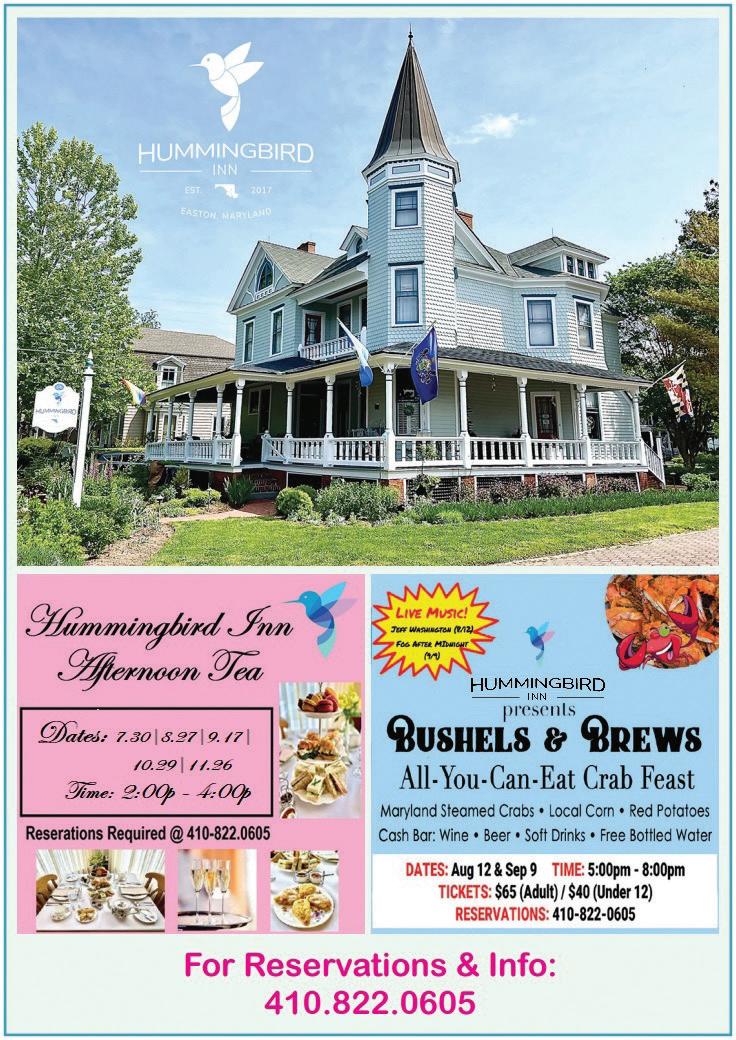
together quite nicely, so here I am, ready to do some business because I like what I see.”
Grady took a sip of his beer to help him keep a blank face as he checked off certain items on his list, like having Jocko on Mustique dealt with (check); the need to take this little package of dynamite a bit more seriously (check); for sure find out more about her (check); and how maybe it hadn’t been such a good idea to have Martin (Neville) tell Isha and RD that he (Grady) was Andy’s father (check)…although it had served its purpose at the time.
“What I’m seeing is pretty good, too, but I’m nobody’s father,” he said quietly.
and Deedee as a couple. Absurd. But then, she’d never seen Deedee in her prime, only sick and demented. Andy had shown her a picture once, Deedee on the tennis court, game face on, trim, looking both powerful and cute.
“Maybe,” Grady said, finding it impossible not to drop his eyes to Isha’s chest, “you should tell me more about the little game I’ve got going. Educate me. I’m all ears.”
Frankly, she couldn’t imagine Grady and Deedee as a couple. Absurd.
“Really,” Isha said, enjoying the compliment but figuring Grady was lying, and also hoping he wasn’t because the cornucopia of complications that would arise if this guy had actually been Deedee’s lover and Andy’s father were too much to contemplate. It sure sounded like a lie, but Isha was all too willing to believe it because it made life so simple if no one bothered to connect her in even the slightest way with Deedee’s murder. Not that she’d had anything to do with it, but there was her association with Mitchell that lawyers would have a field day with. And, frankly, she couldn’t imagine Grady
A point for me, Isha thought as she registered Grady’s appreciation of her physical self. “I don’t know where you get ’em,” she said, “but you move ’em. Often on boats. Large sailboats with destinations that match where they need to go. Could be cruising sailboats, or even race boats.
If Andy is your son, it would make sense you’d use that connection to move ’em from Australia to Miami on his boat. How’m I doing?”
“Fascinating,” Grady said, signaling a passing server to bring them another round. “You have a strong creative gene.”
“I’m also a good researcher.”
Grady had to agree. This babe had put it together. “Be right back,” he said and headed for the bathroom. At times like this, Grady found himself wishing that he and his group had a more traditional, more terminal solution to troublemakers they encountered along the
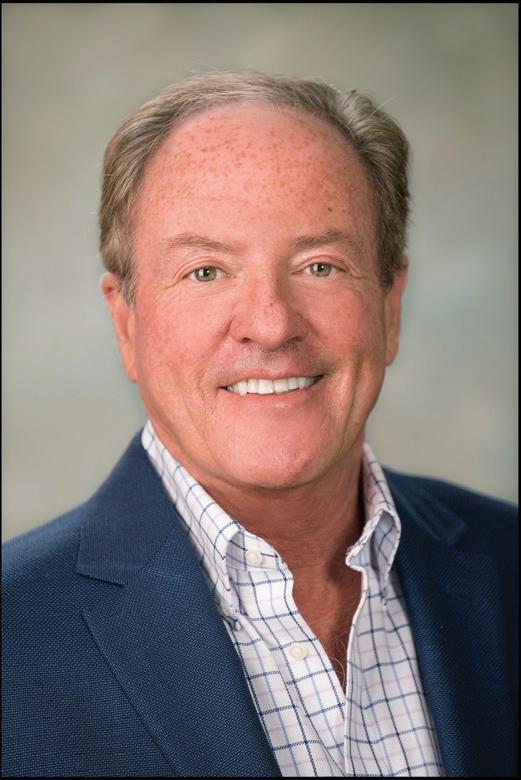

way. Bad dogs, they called them. But keeping it bloodless was part of the credo that had served them well for the last twenty years. The way they’d dealt with Jocko in Mustique had been unusually extreme. Several members of the group had been against it, as light a punishment as it was. A broken arm. No big deal. Neither Grady nor any of his bunch were killers. Not even Martin. And Isha, what a shame it would be to waste such a fi ne biological example of womanhood. Grady had to laugh at his sexist lapse, staring at himself in the restroom mirror. Although he could sense how tough she was. He wouldn’t put terminal solutions
past her if her back was against the wall. Trouble, he thought. Trouble.
Back at the table, Grady remained standing.
“I lied,” he said. “I don’t have time for dinner, certainly not with some self-styled opportunist who accuses me of moving contraband around on race boats. Sorry. No business to be done here. The check is covered.”
Grady beamed Isha his best smile, turned and left the restaurant.
Isha had smiled back, then watched Grady walk away with his smoothly balanced sailor’s gait. She stopped a waitress and ordered a lobster.

Vaughan.roger@gmail.com
Easton Village - New construction and never occupied. Brookfield Harrington model. Features a living/dining combination, family room with gas fireplace opens to gourmet kitchen, 1st floor primary suite plus guest bedroom and bath. 2nd floor has large loft area and 2 guest bedrooms and bath. Luxury plank vinyl flooring throughout. Walk-in attic storage. Rear patio. Natural gas heat and central air. Waterfront community close to downtown Easton and short drive to St. Michaels and Oxford on the Tred Avon River. Miles of trails, Clubhouse, waterside outdoor pool, Vicker’s park with picnic area and Bocce ball, fishing and crabbing pier and over 50 acres of preserved wetlands. $785,000
Chesapeake by Del Webb - Well maintained 2-story Wittman model with office, dining room, gourmet kitchen opens to great room with gas fireplace, sunroom, 1st floor primary suite, guest bedroom and full bath. 2nd floor has loft, guest bedroom and bath. Two-car attached garage, private backyard with large patio. Irrigation. Lot backs to community area with gazebo. New roof August 2022. Community amenities include pool, tennis/pickleball courts and clubhouse. 55+ age restricted section. $485,000
Chesapeake by Del Webb - This beautiful McDaniel model features a living room, formal dining room, family room with gas fireplace, open kitchen with under counter lighting, breakfast nook, 1st floor primary suite and powder room. The 2nd floor has 2 guest bedrooms and bath, loft/office area and finished walk-in attic. Attached 2-car garage, lawn irrigation, paver patio and covered porch. Community amenities include pool, tennis courts and clubhouse. 55+ age restricted section. $495,000




This is a great time to list your home. Our inventory is low and we have buyers looking for their dream home. Please call me for a no obligation Comparative Market Analysis.


27999 Oxford Road, Maryland 21654







